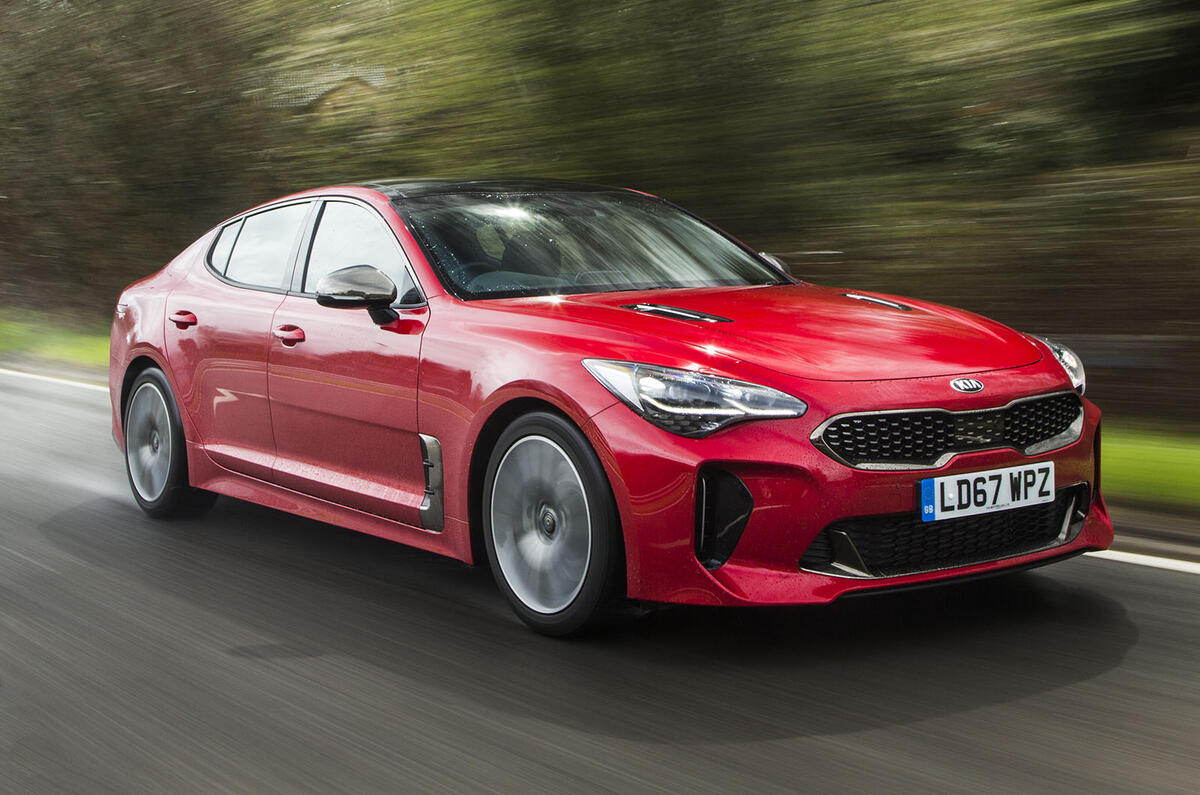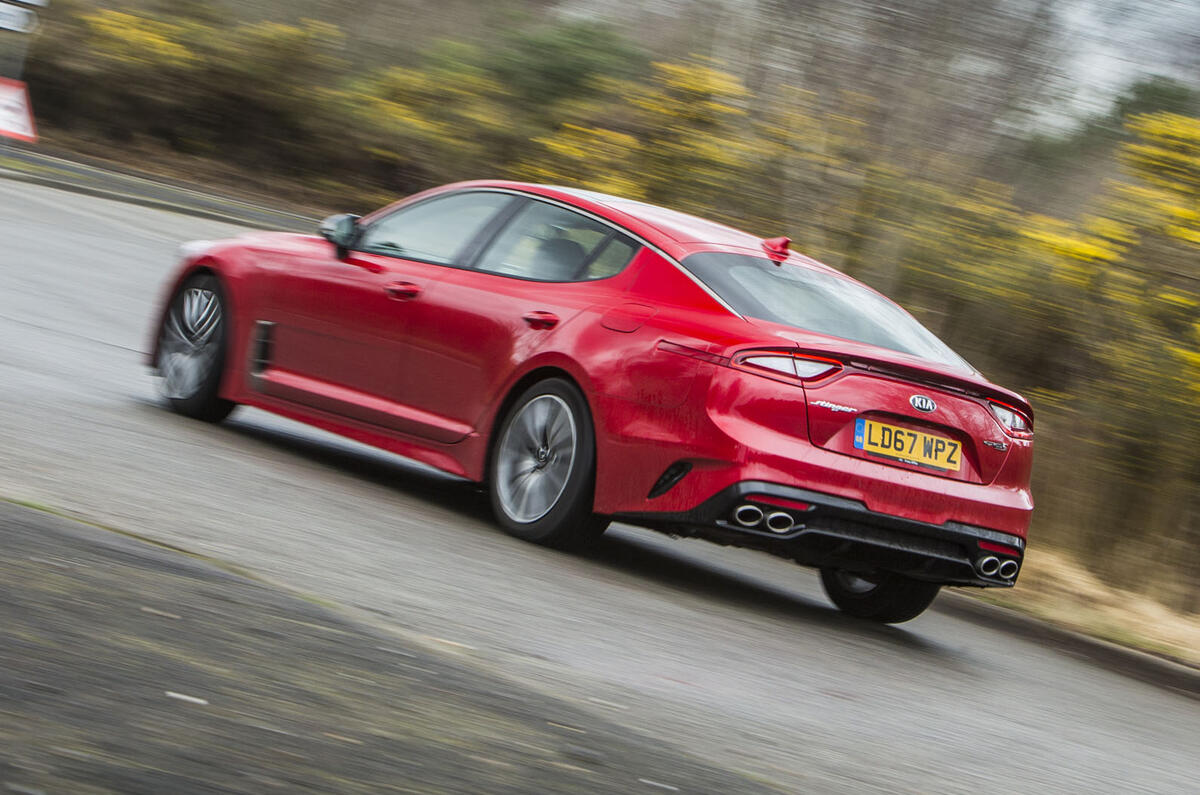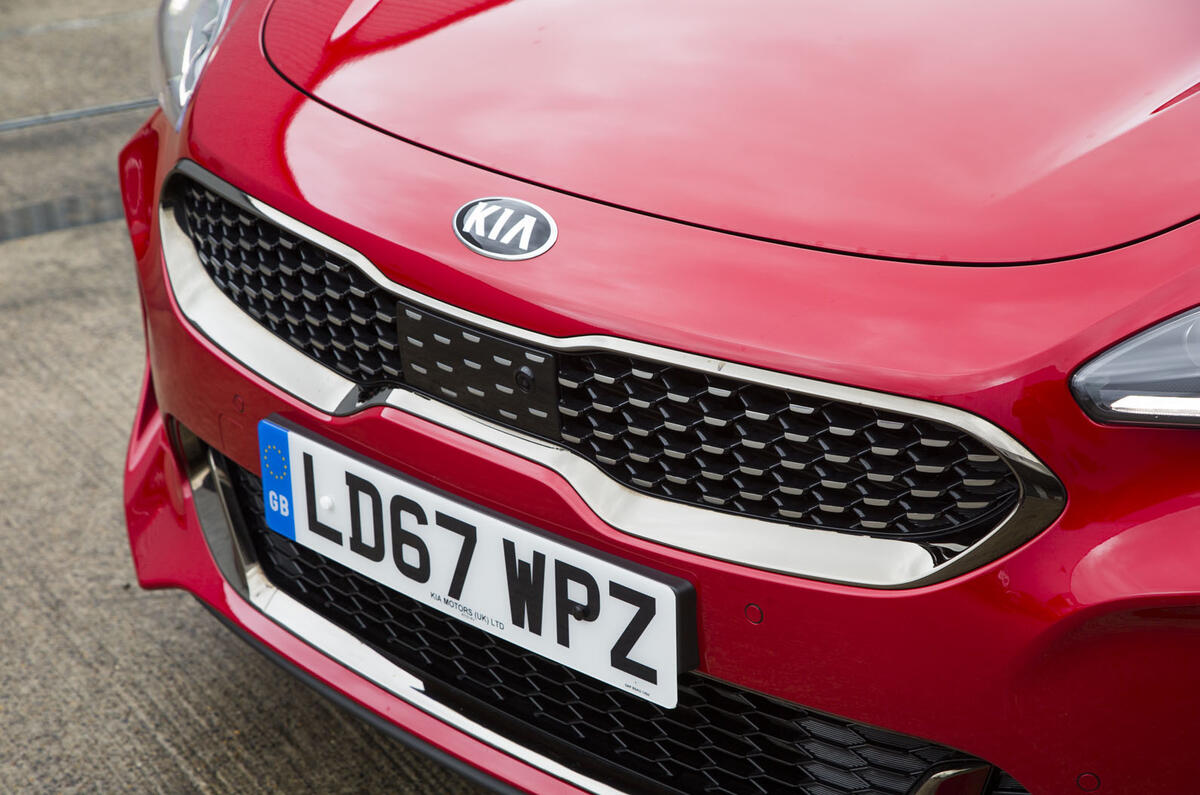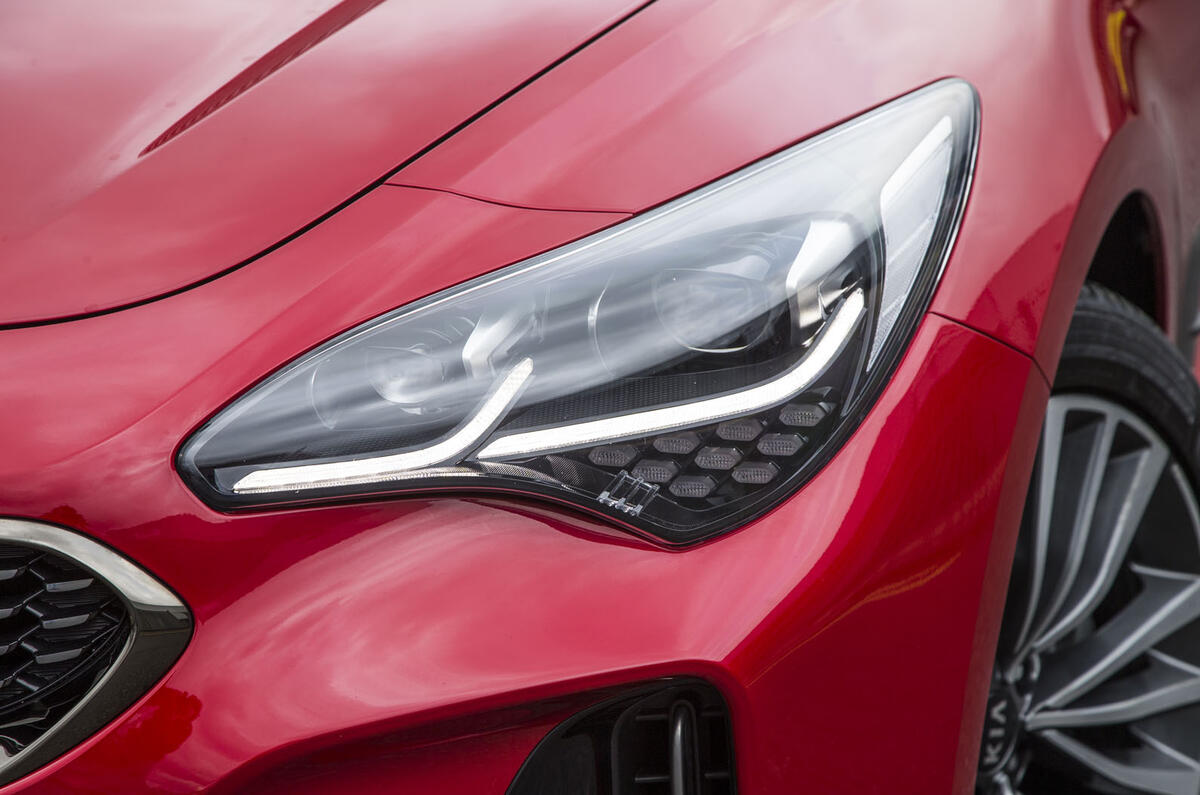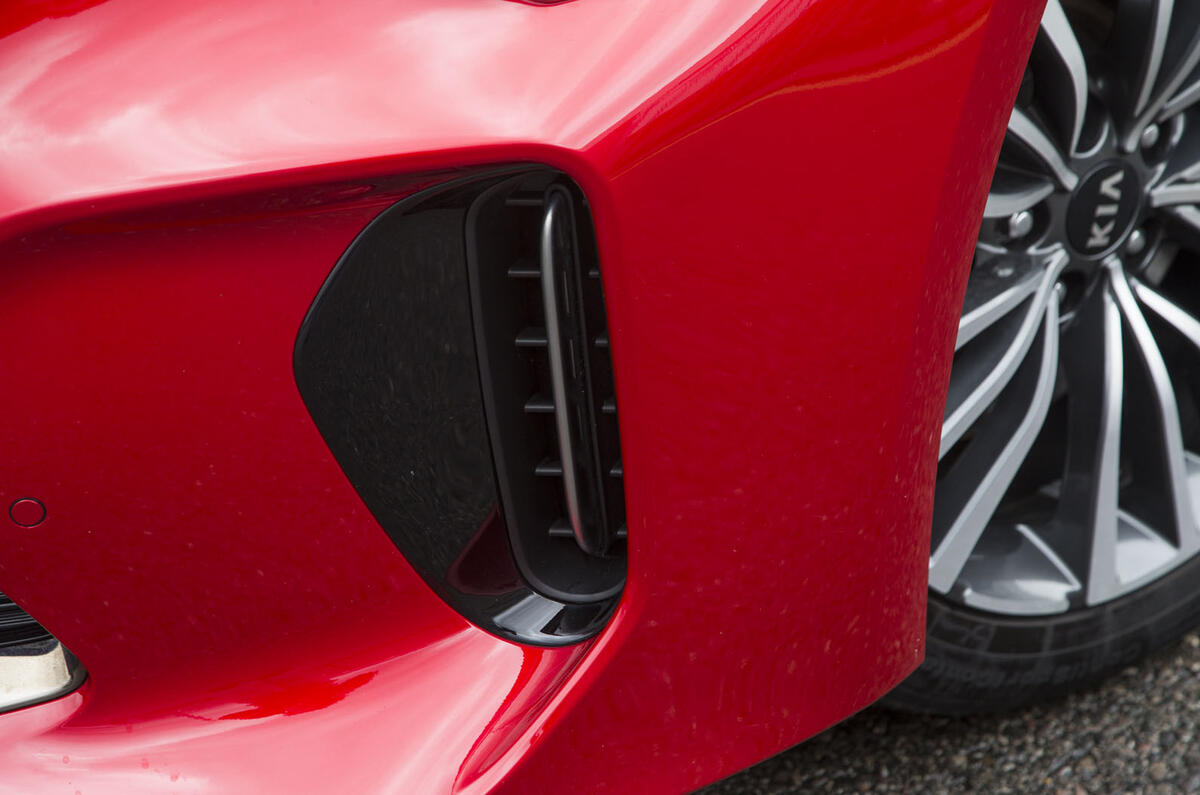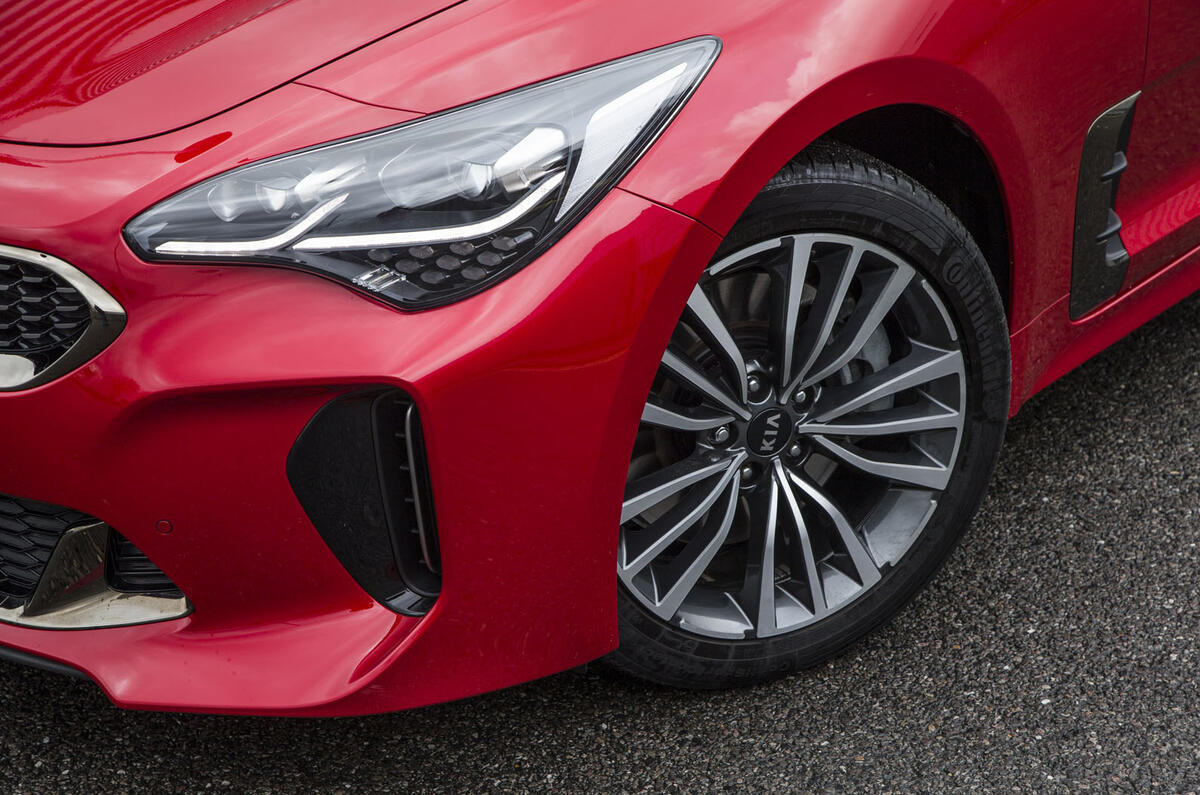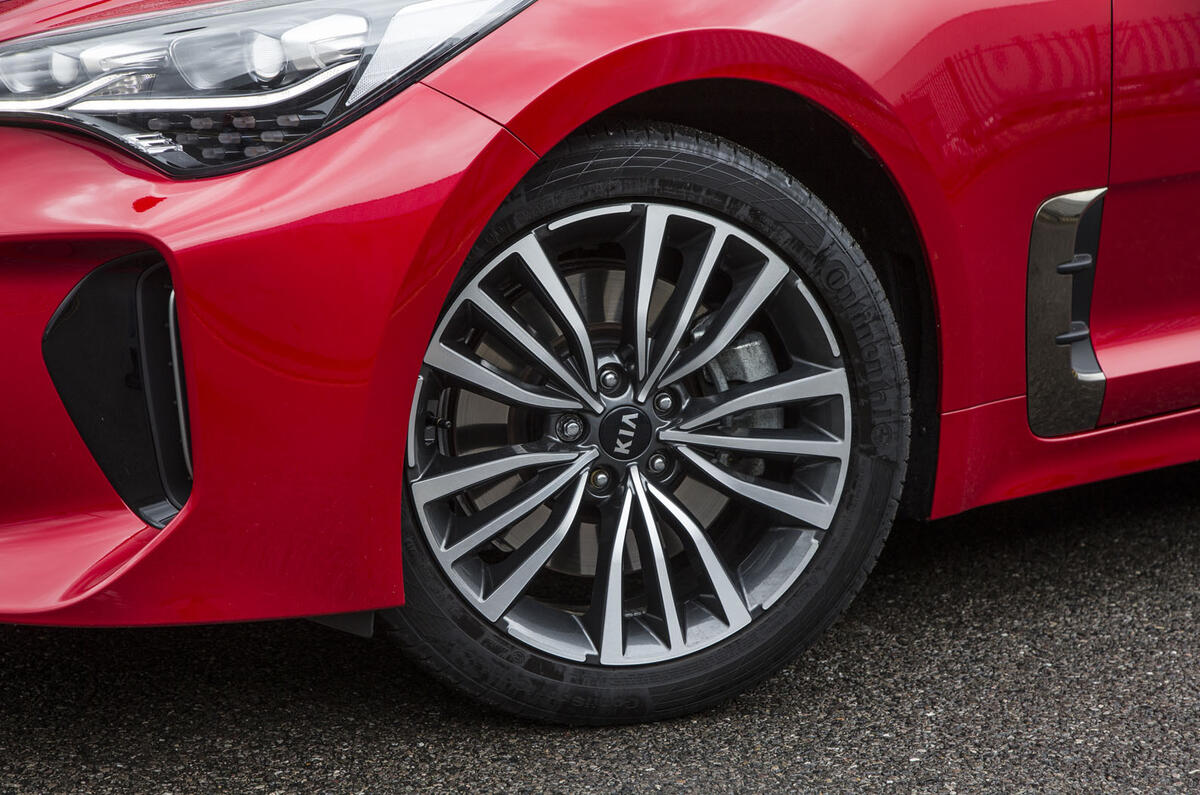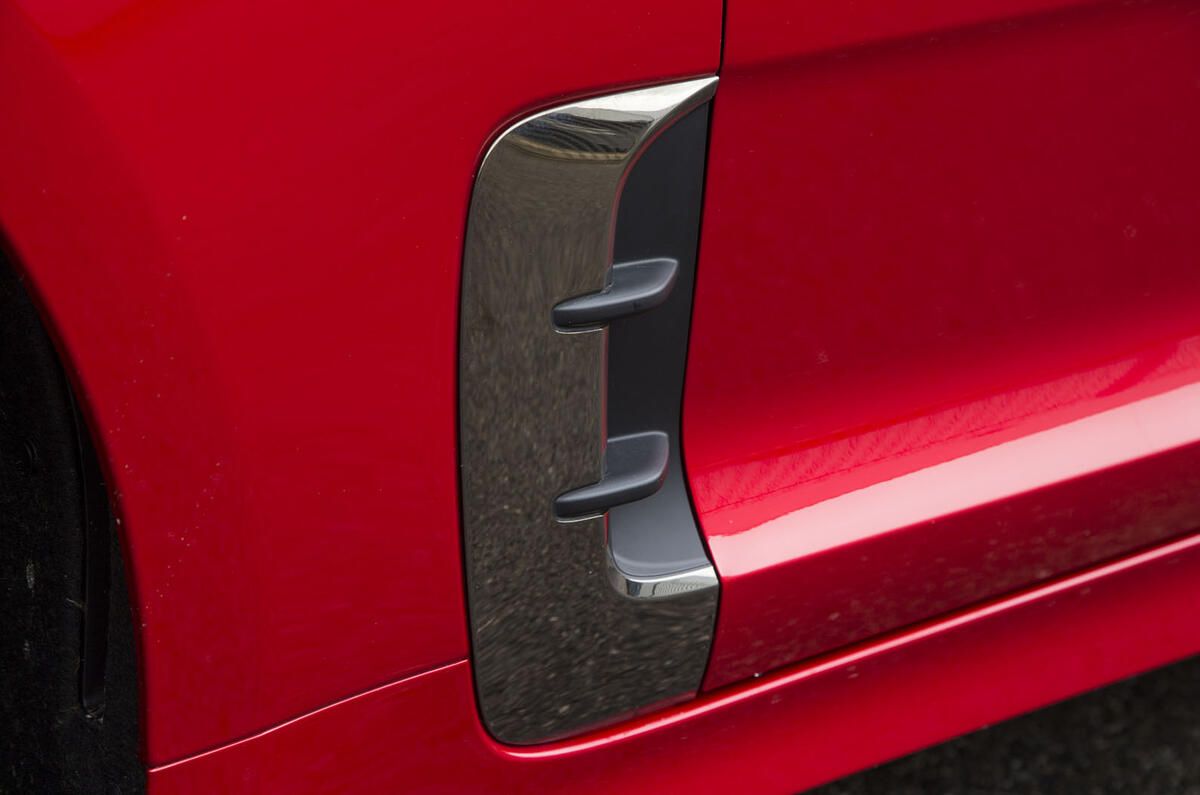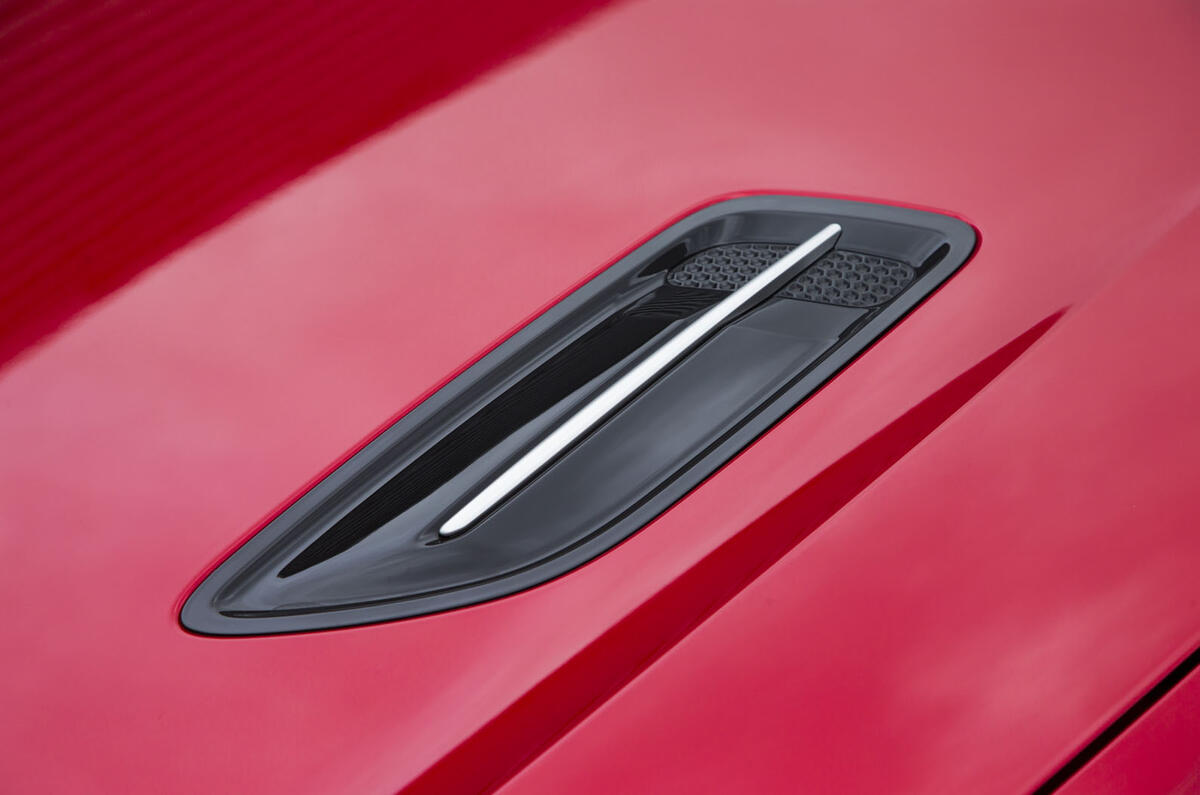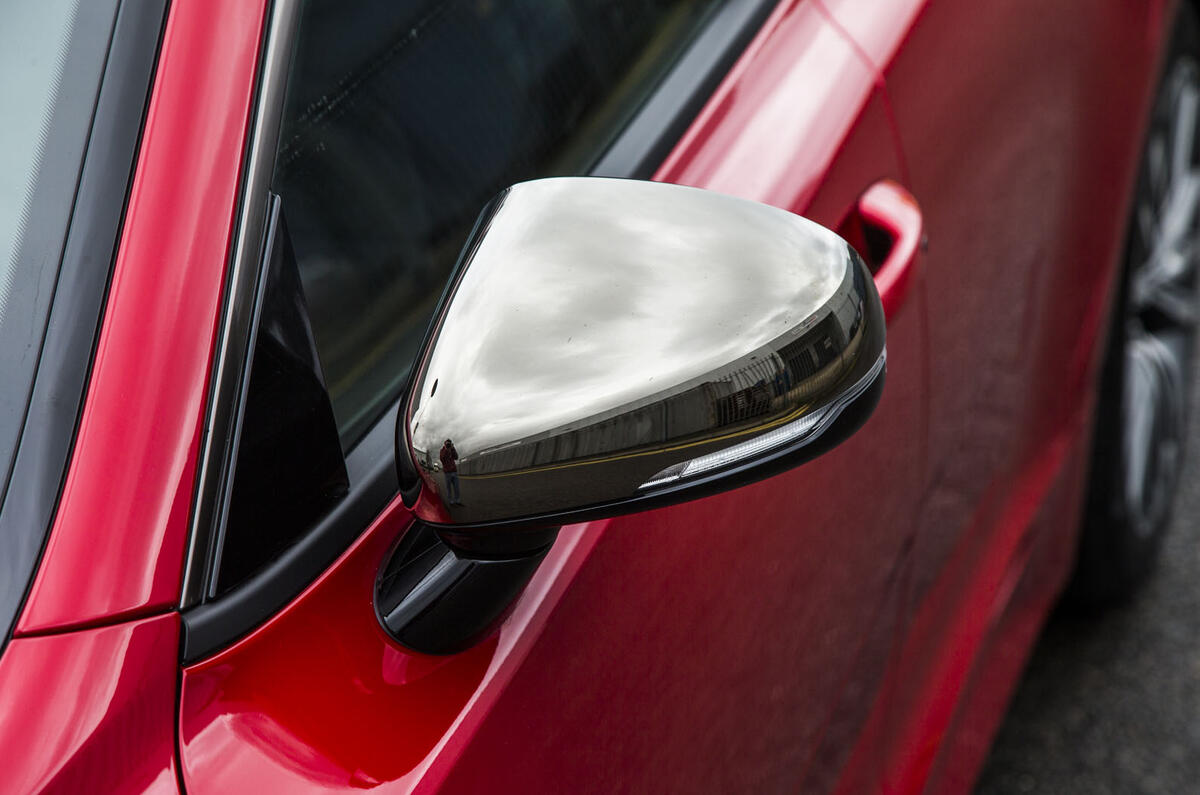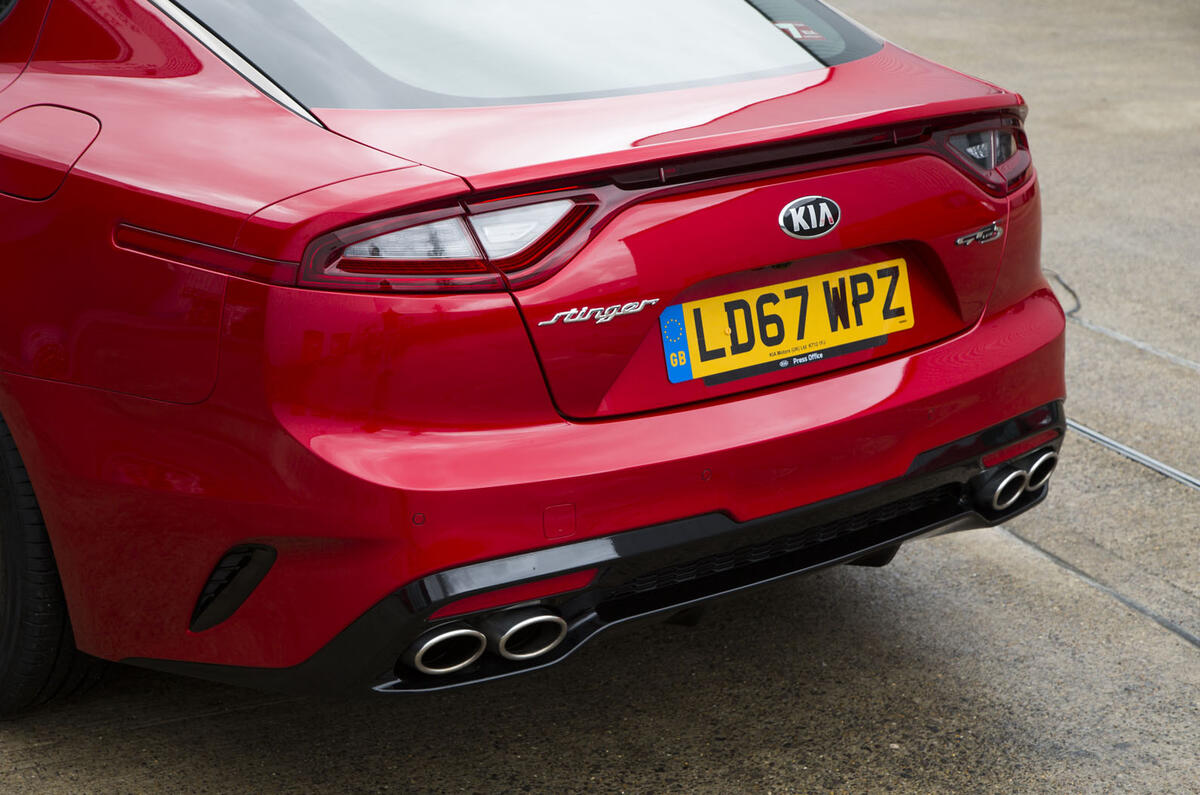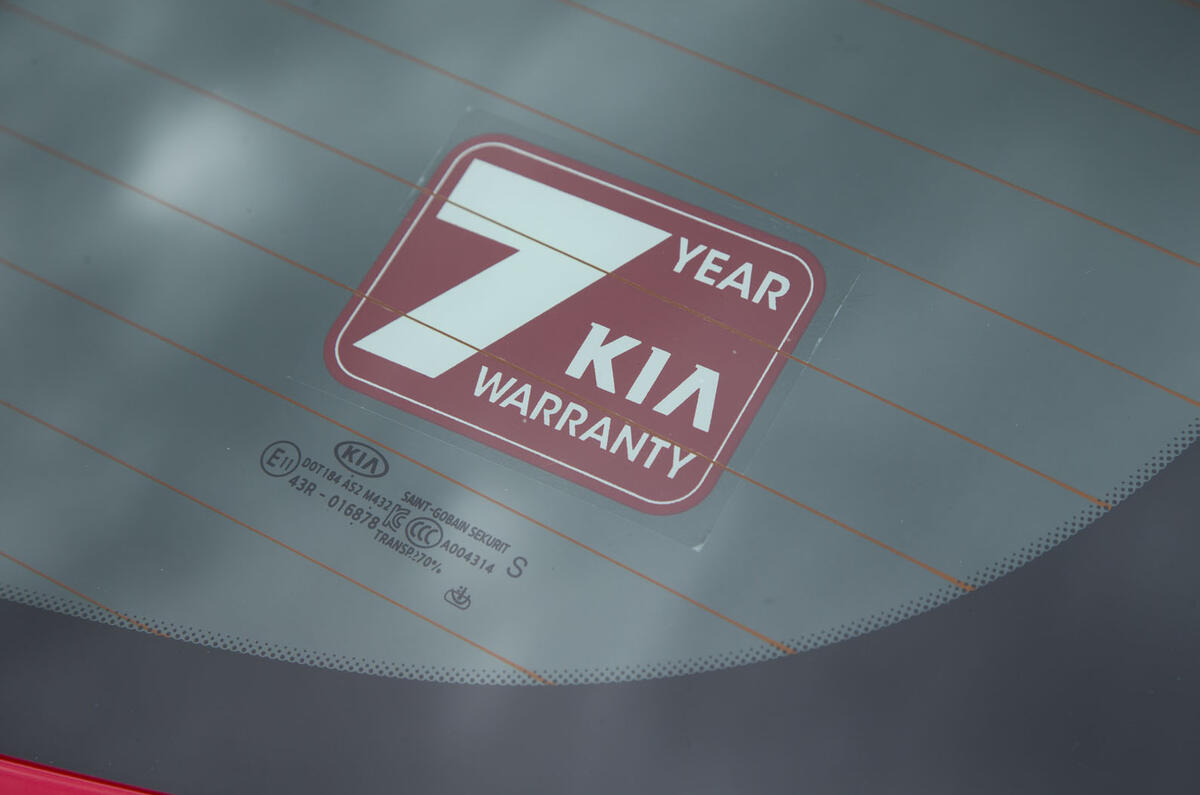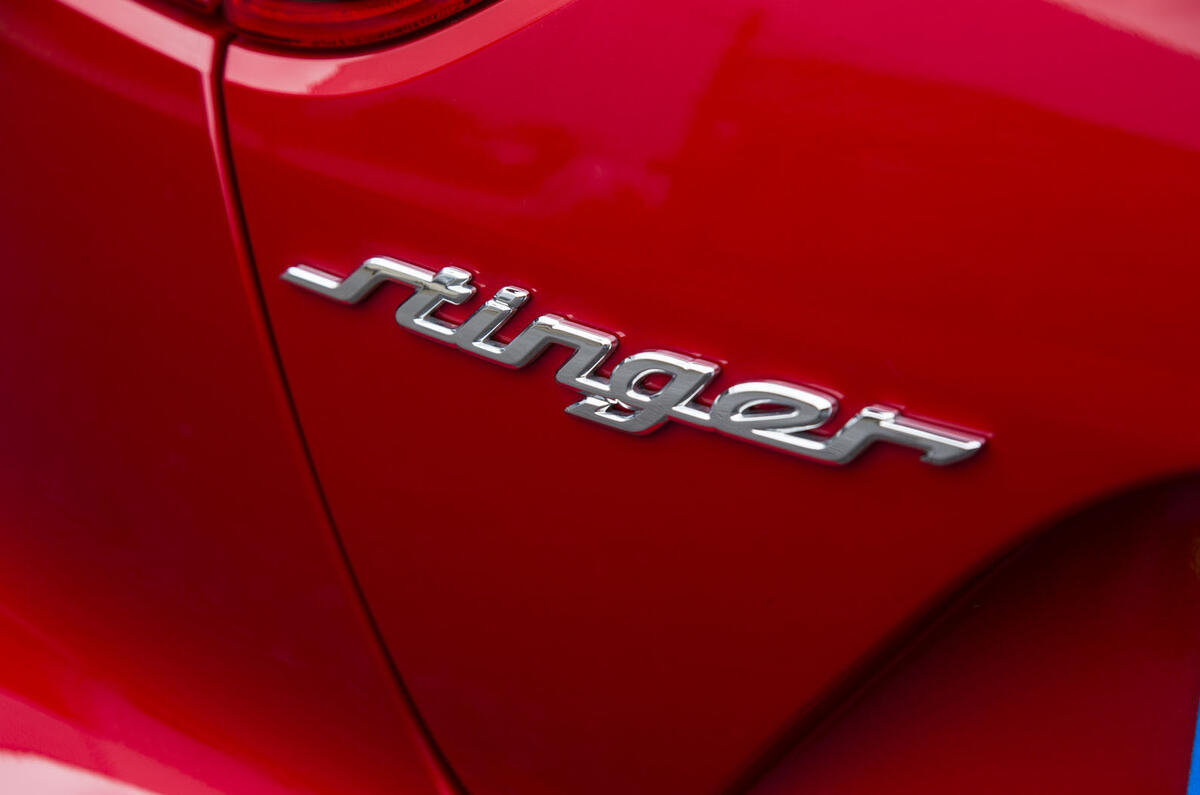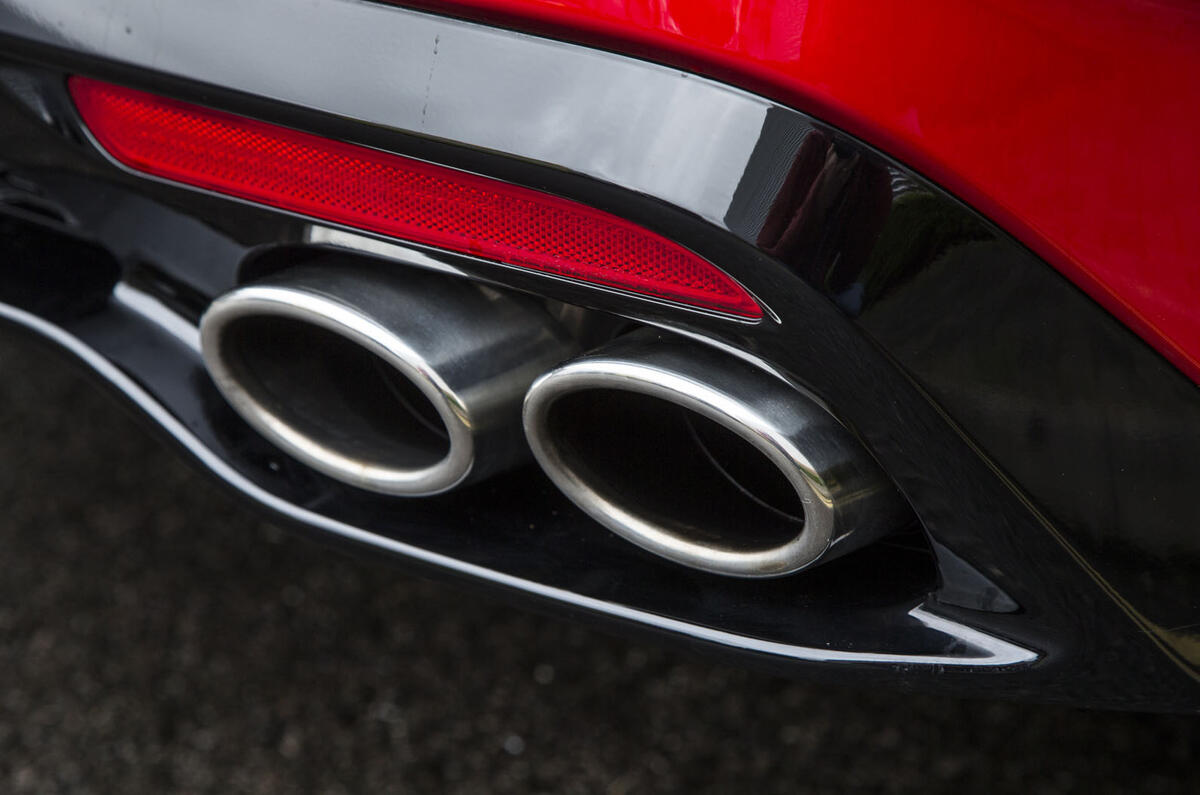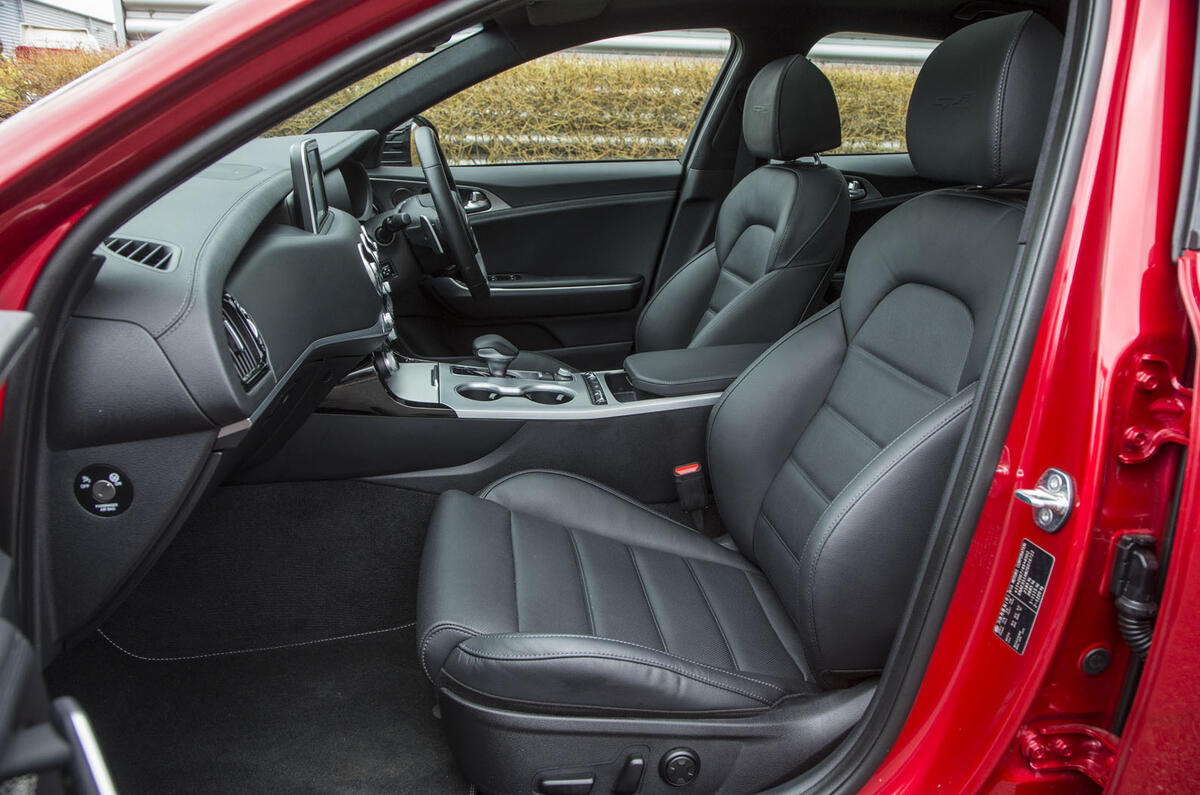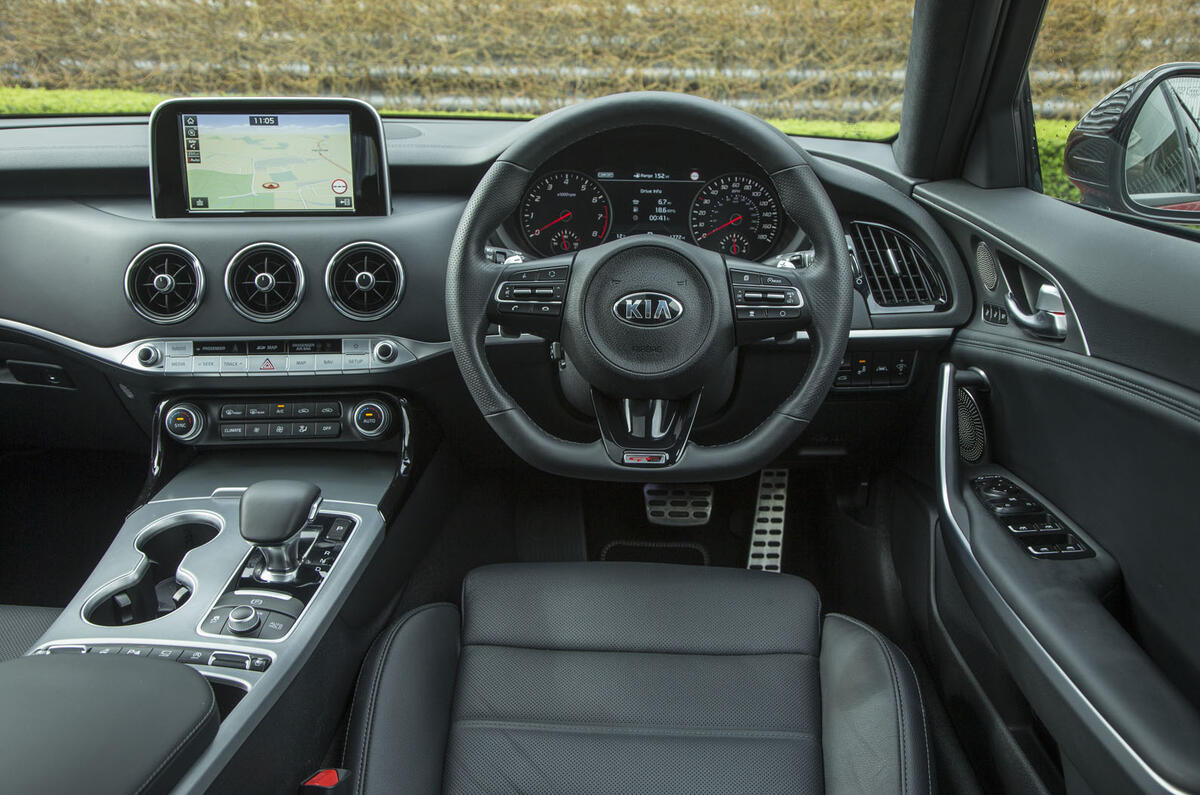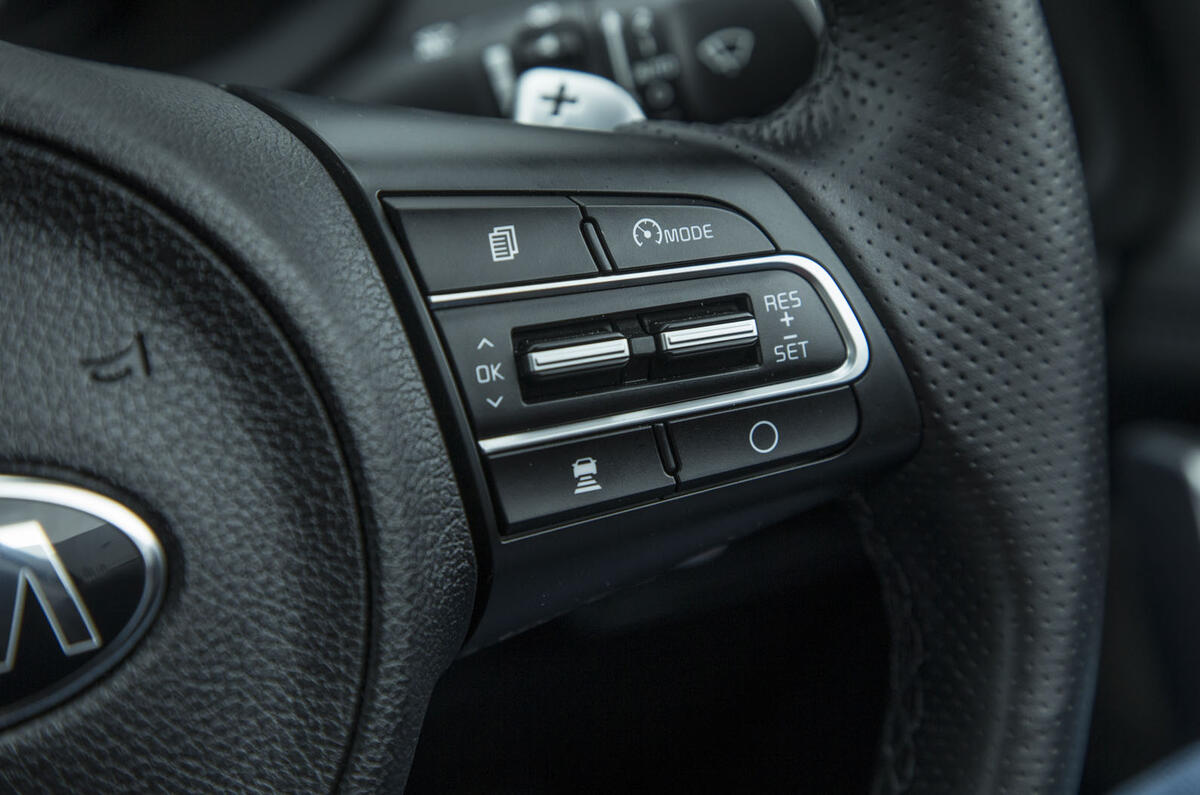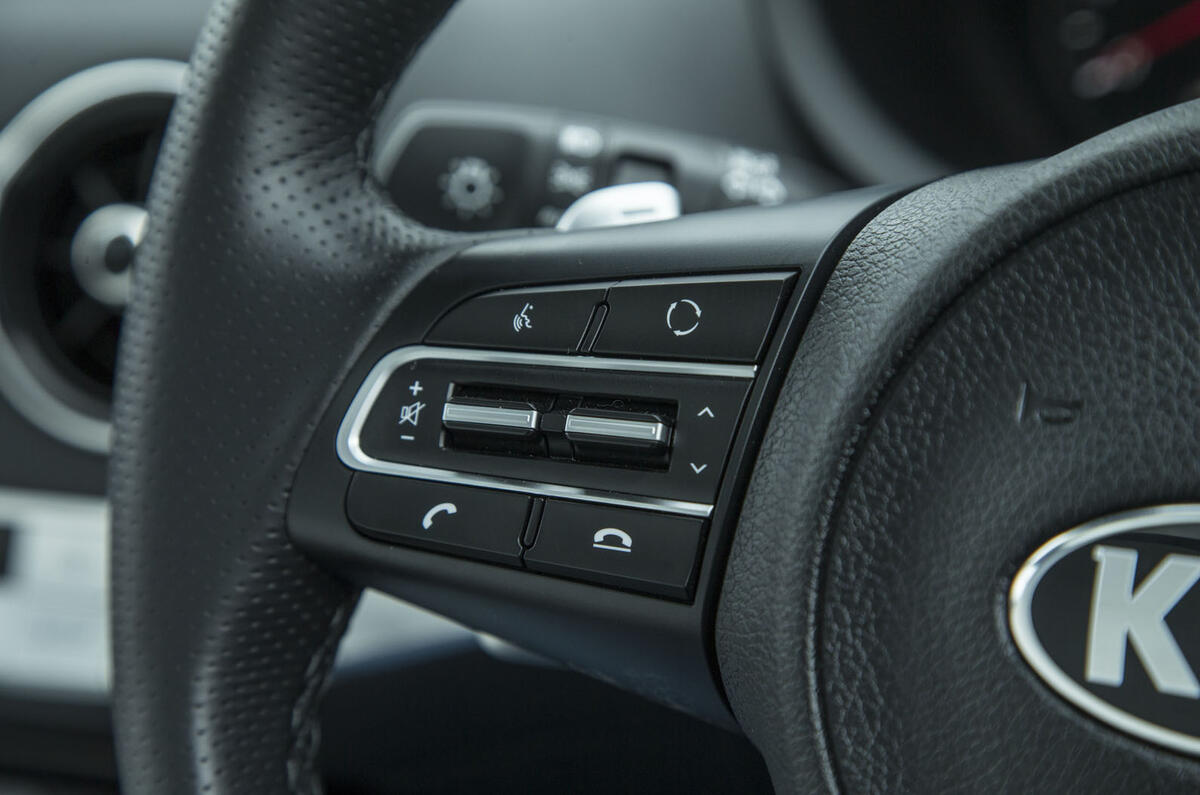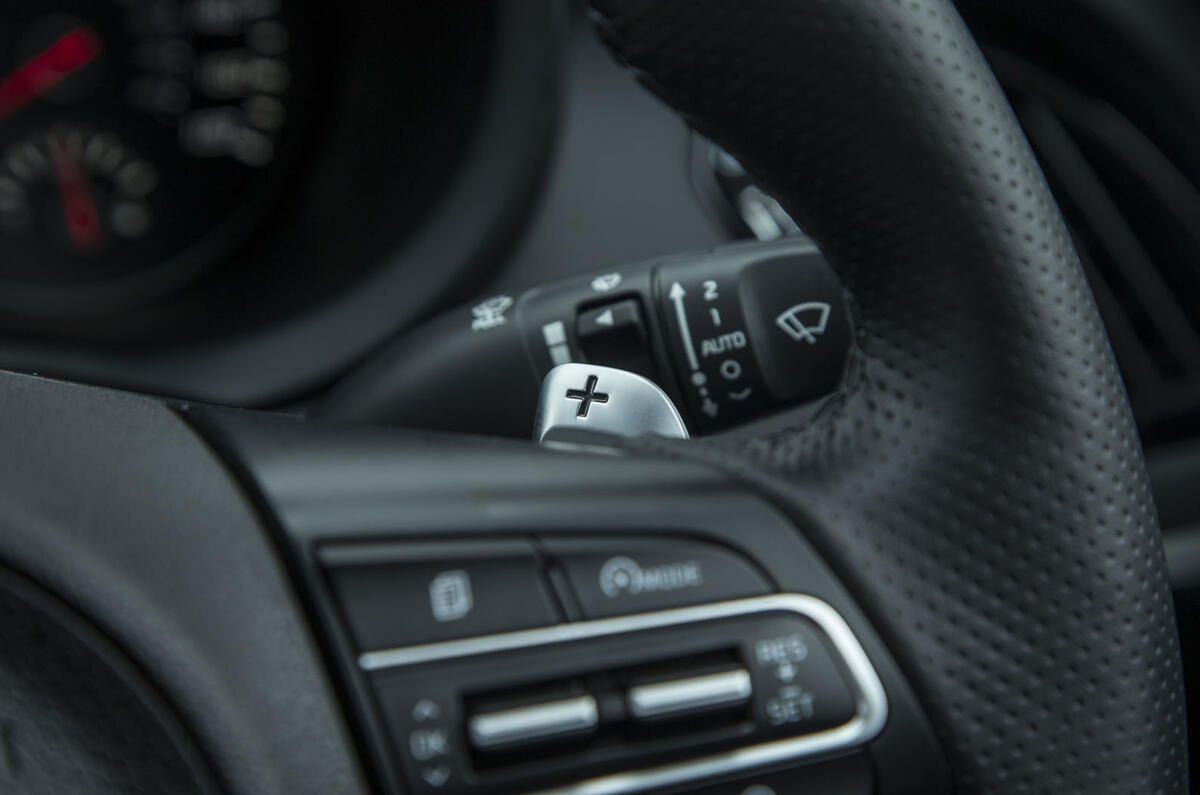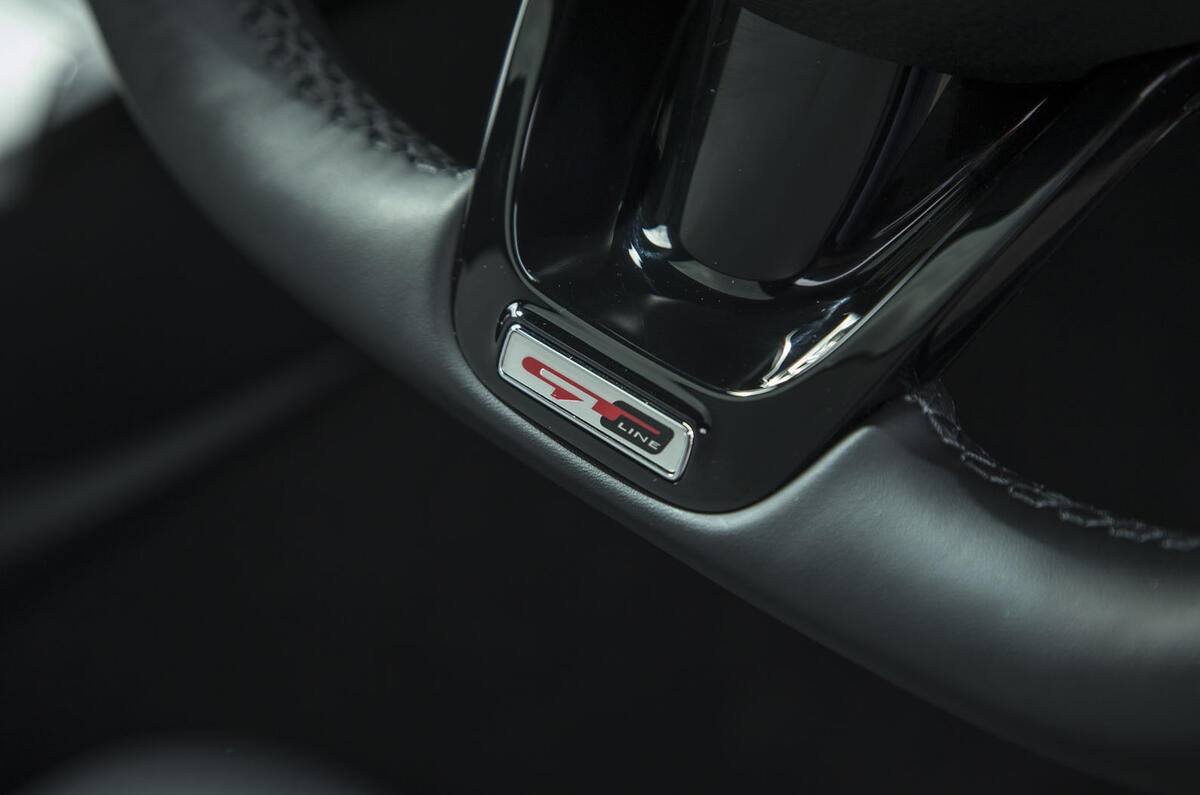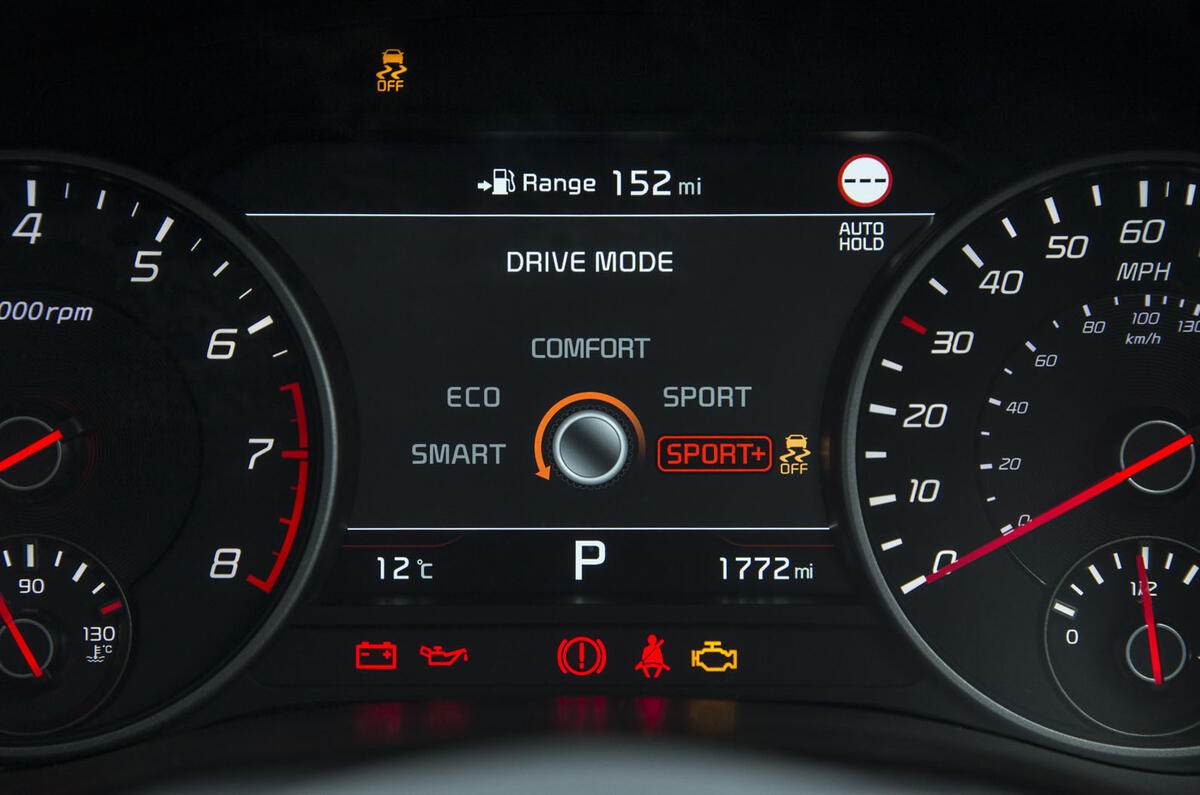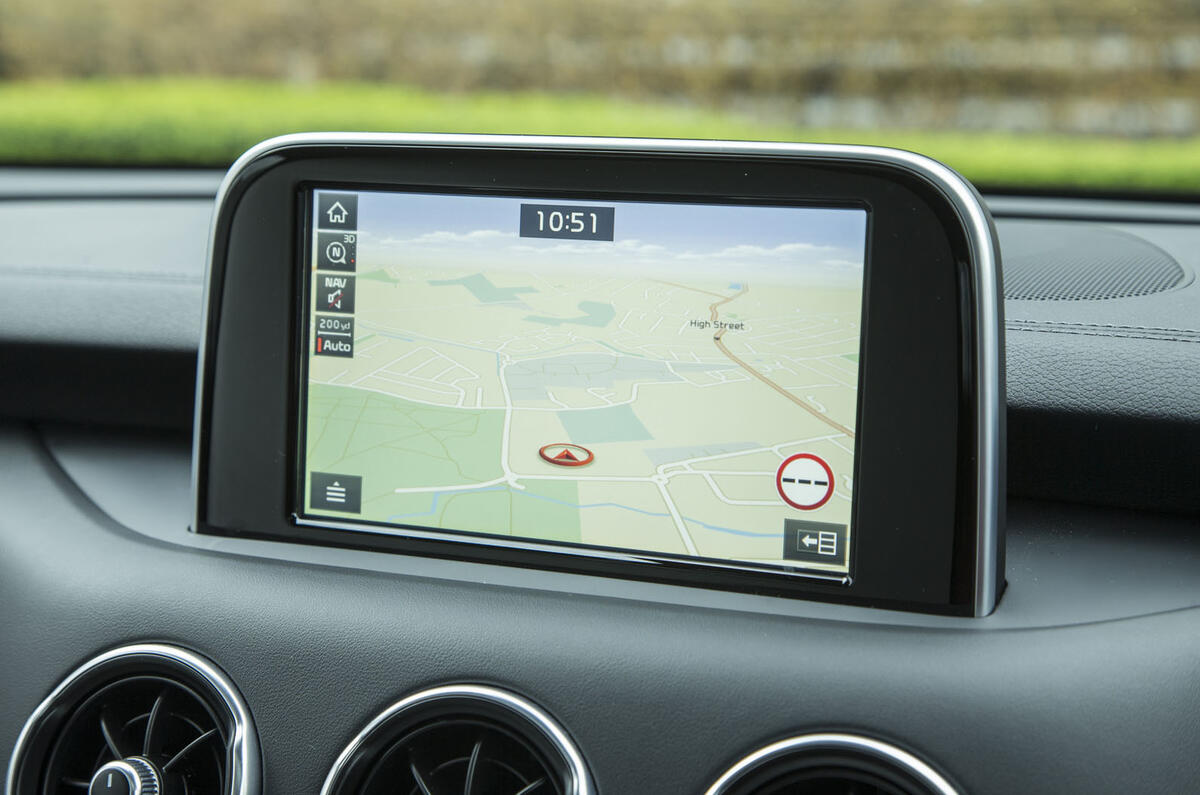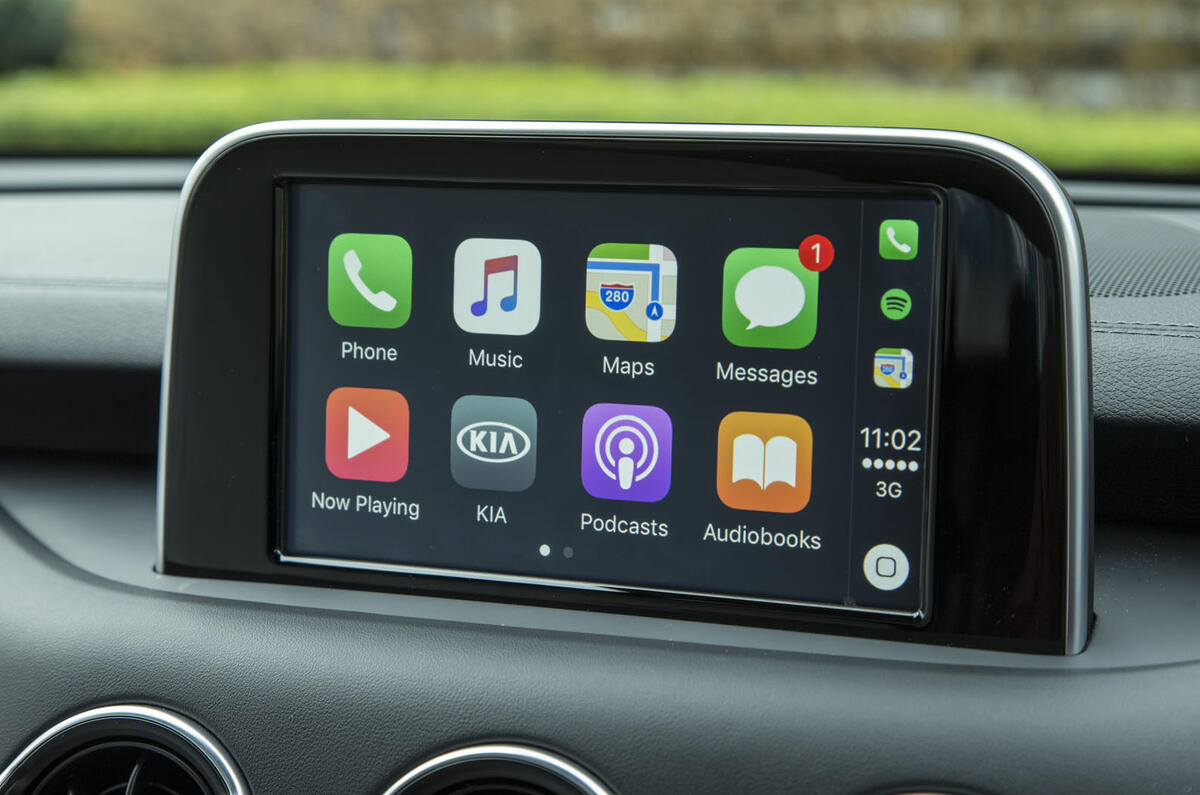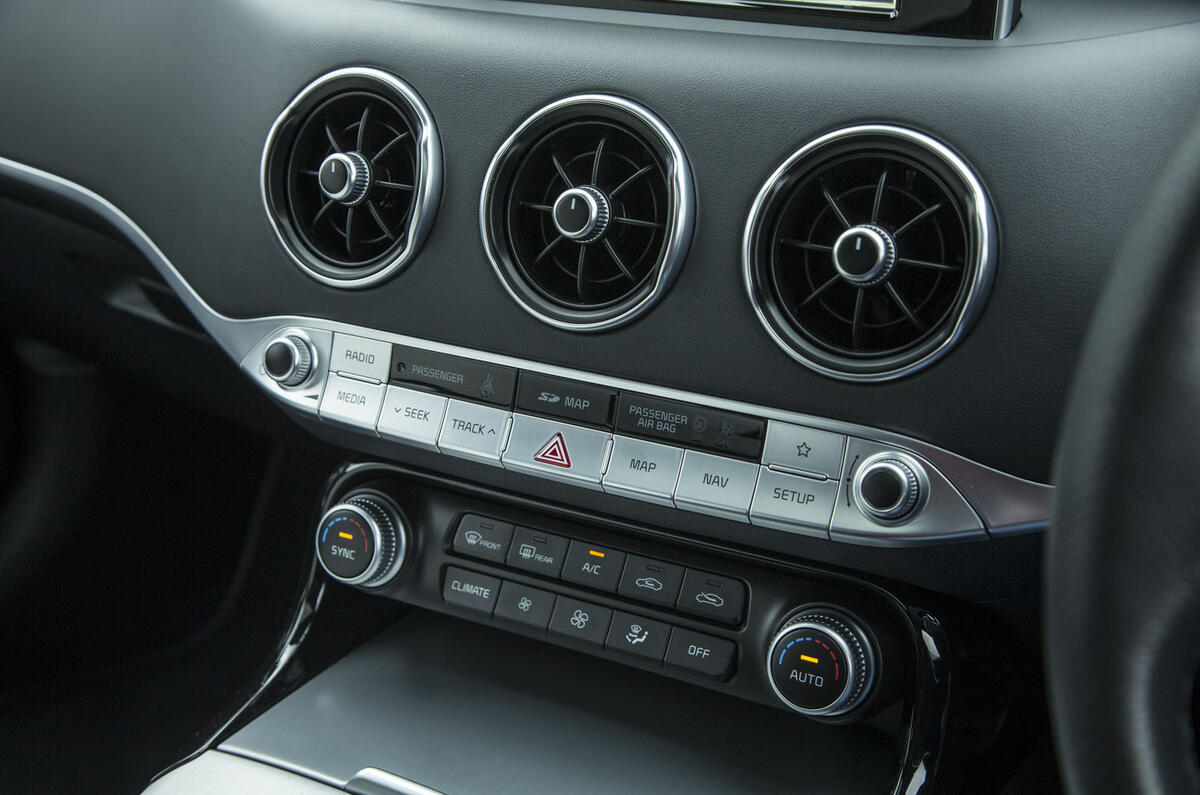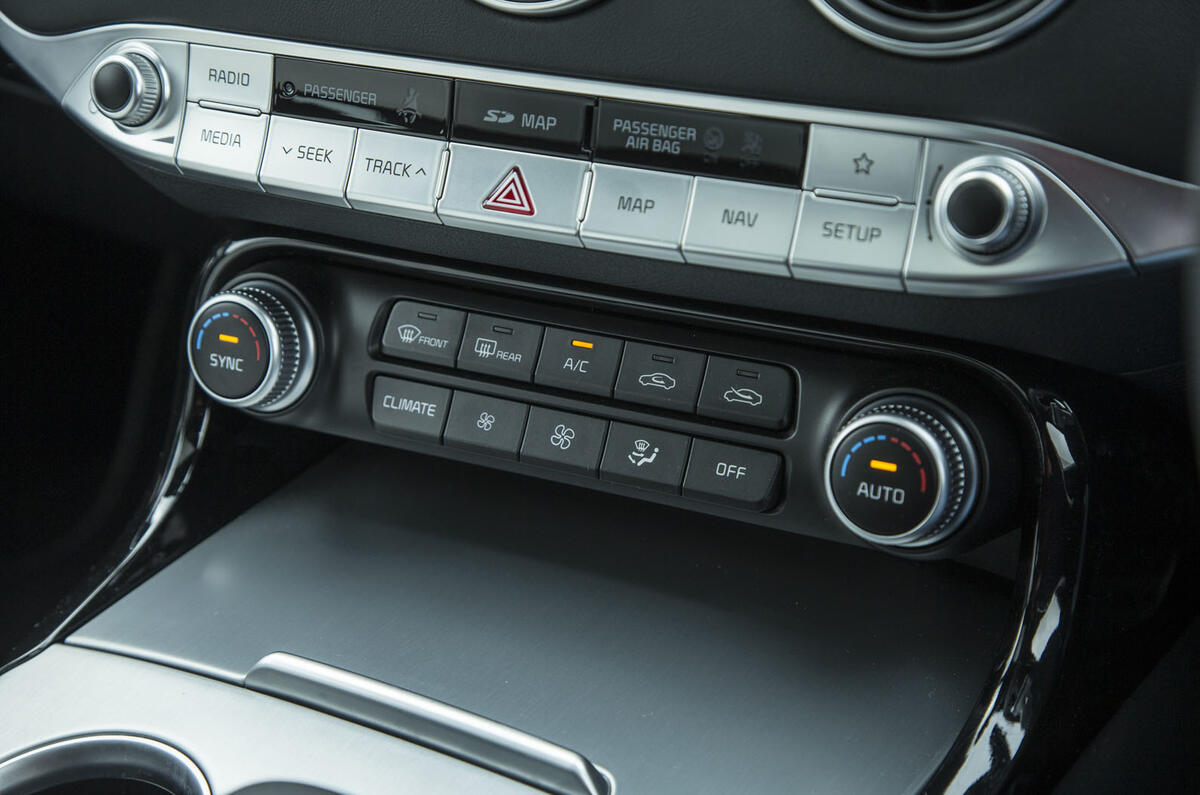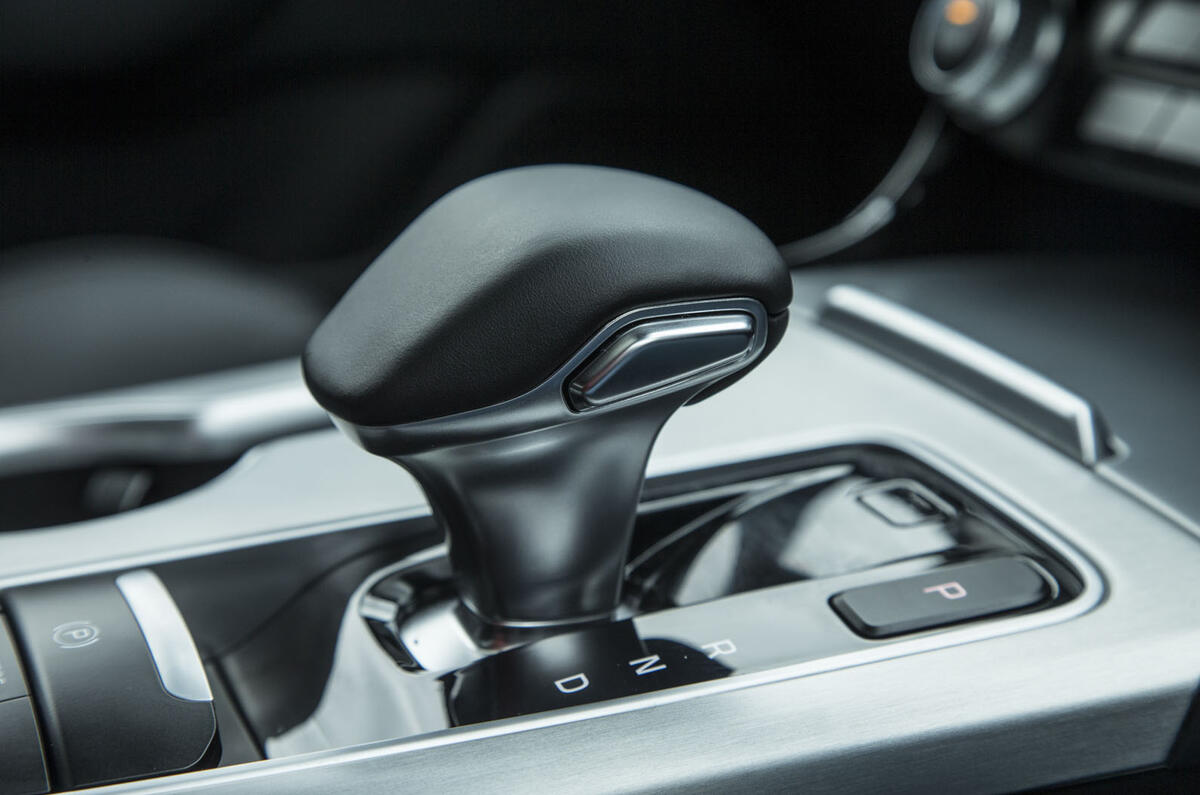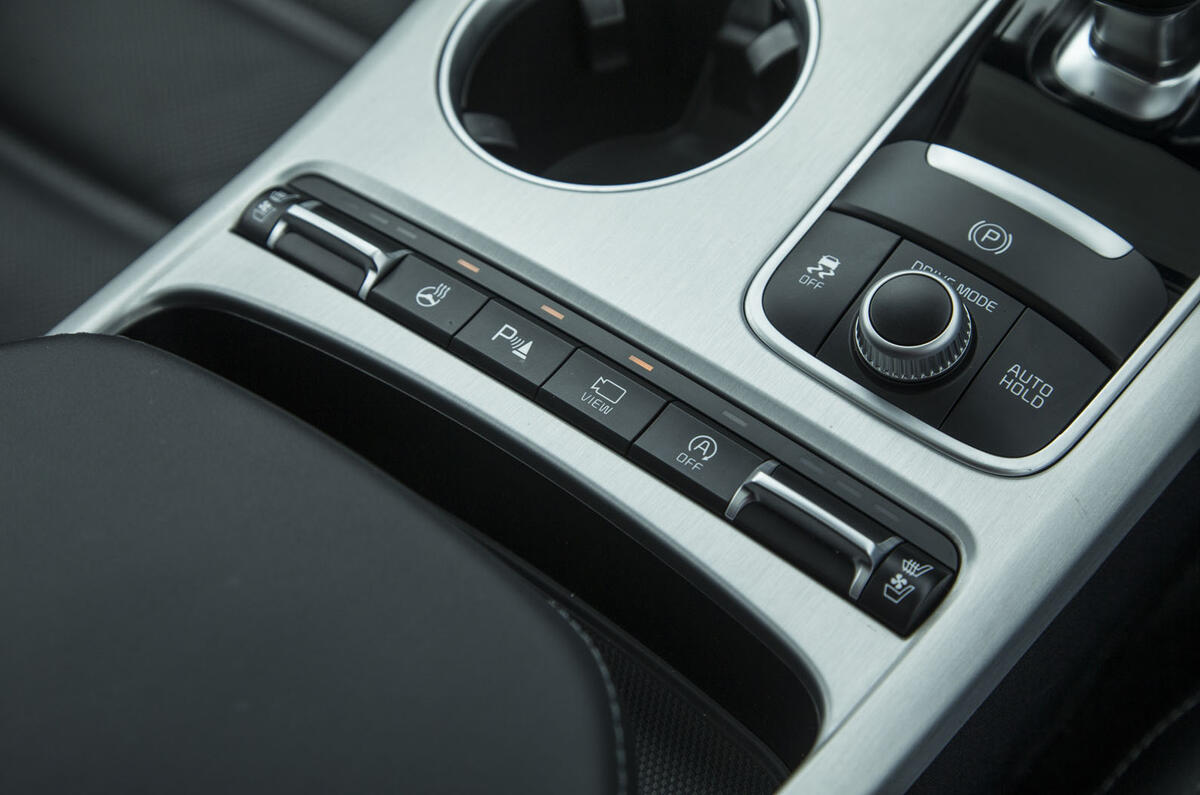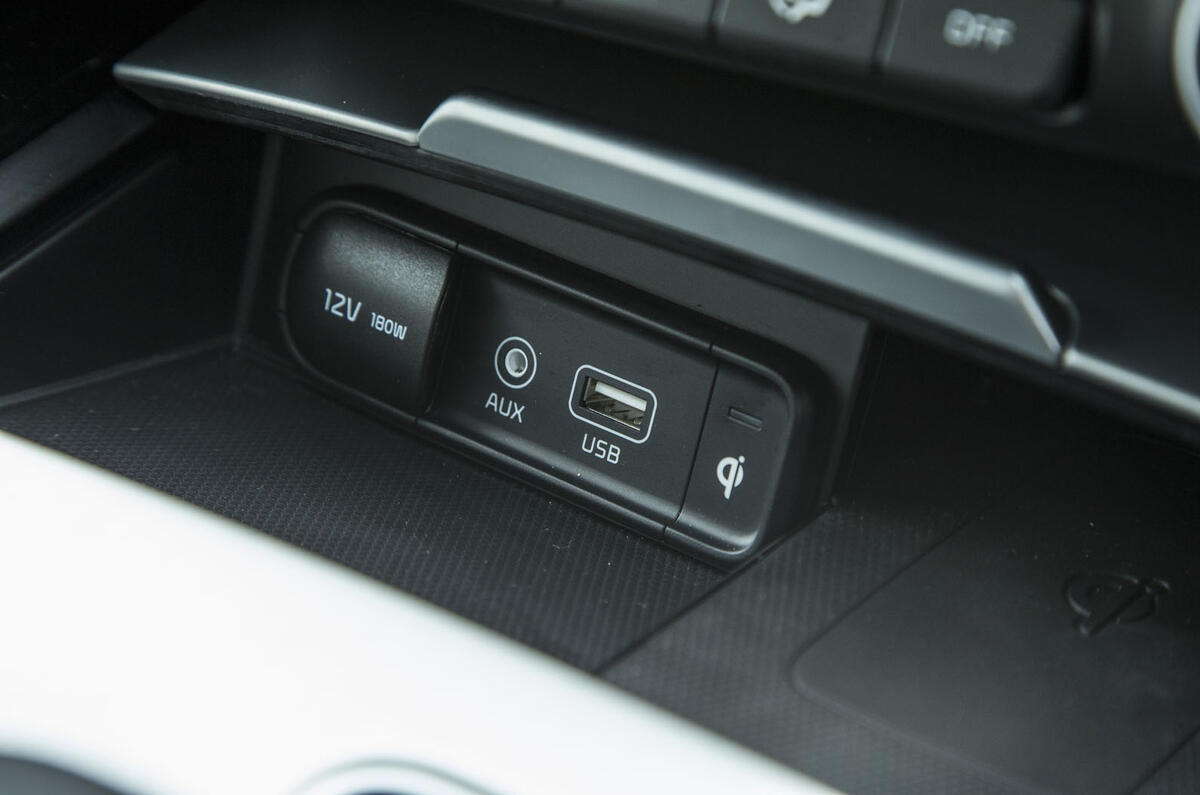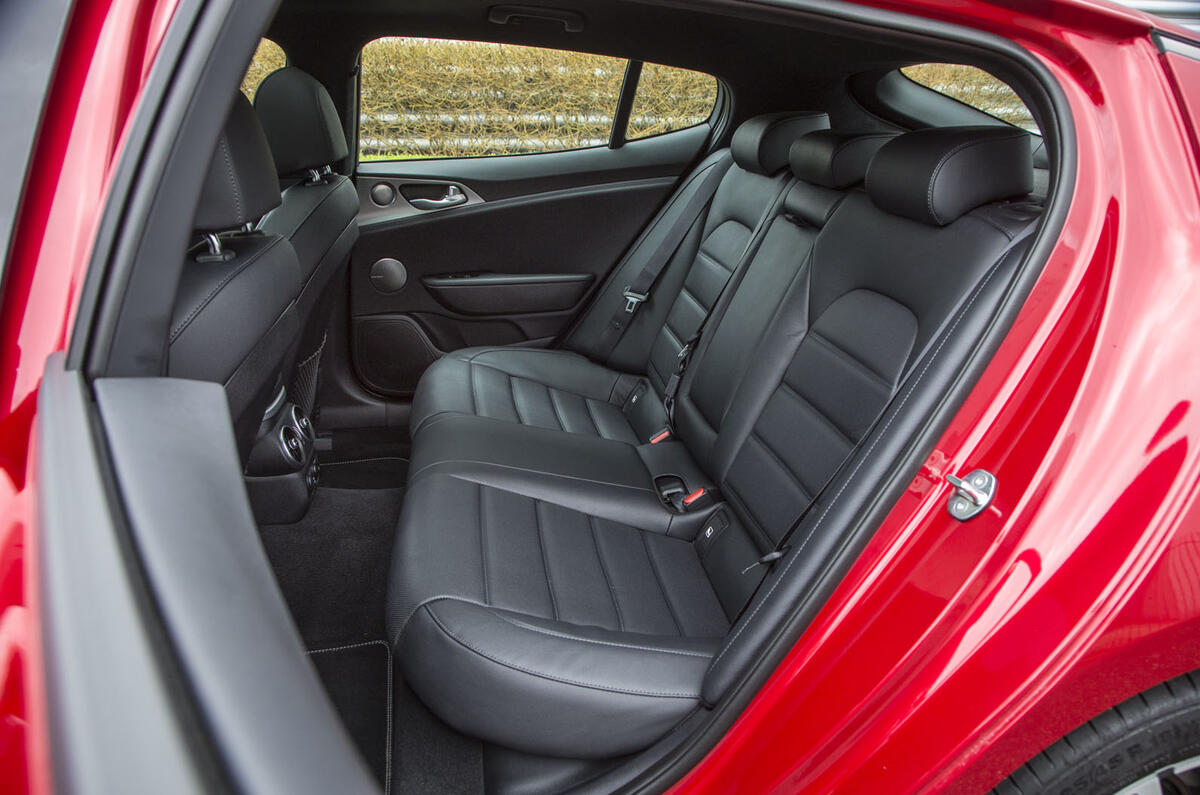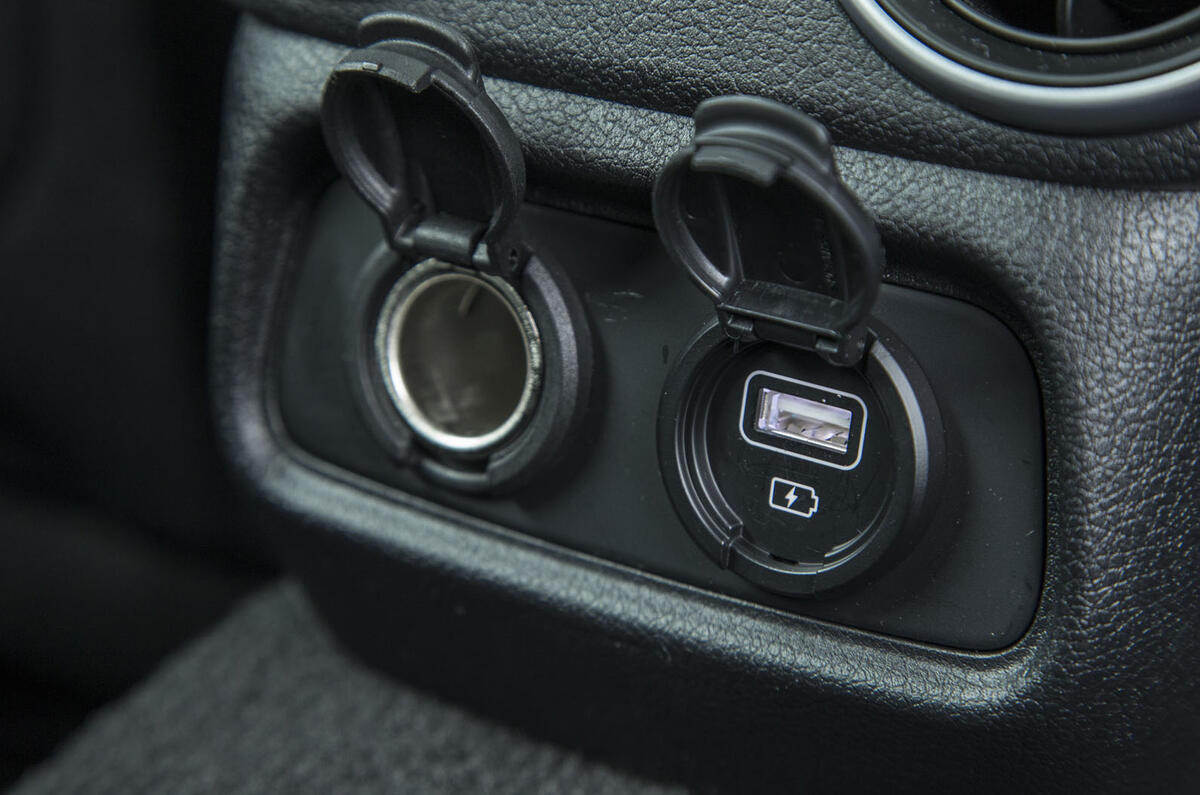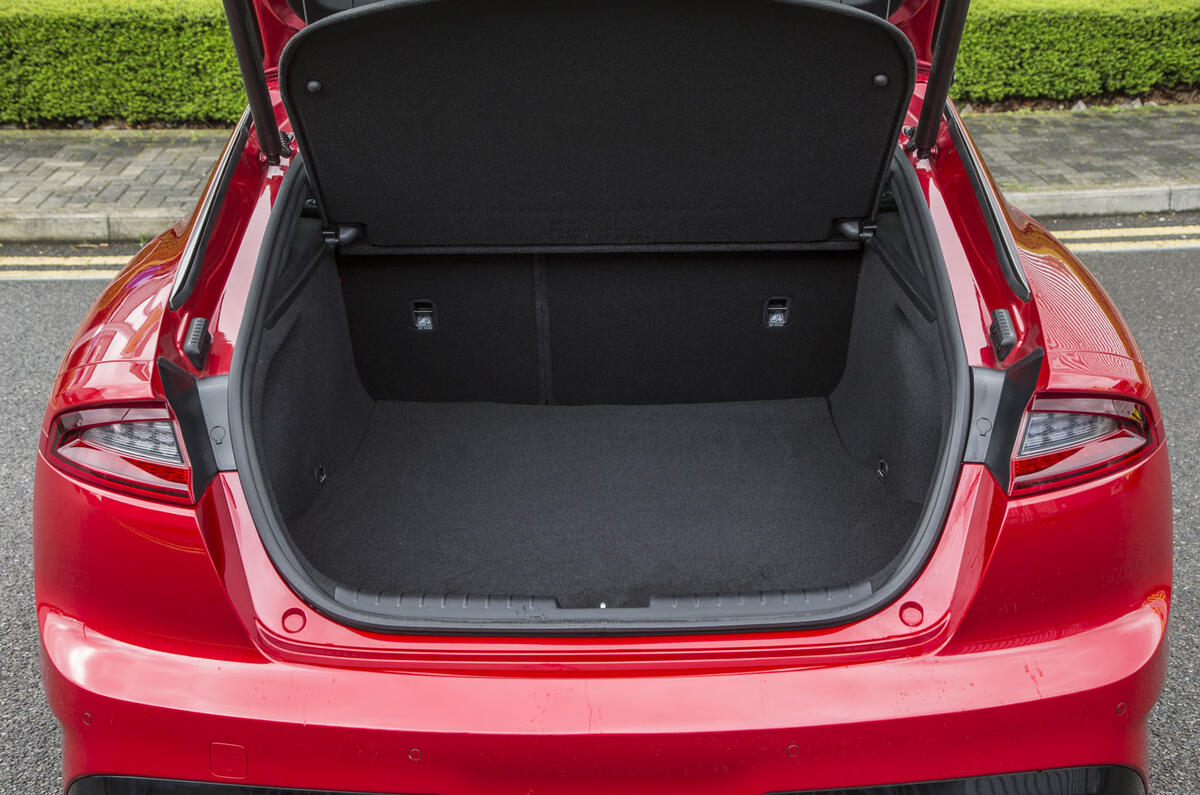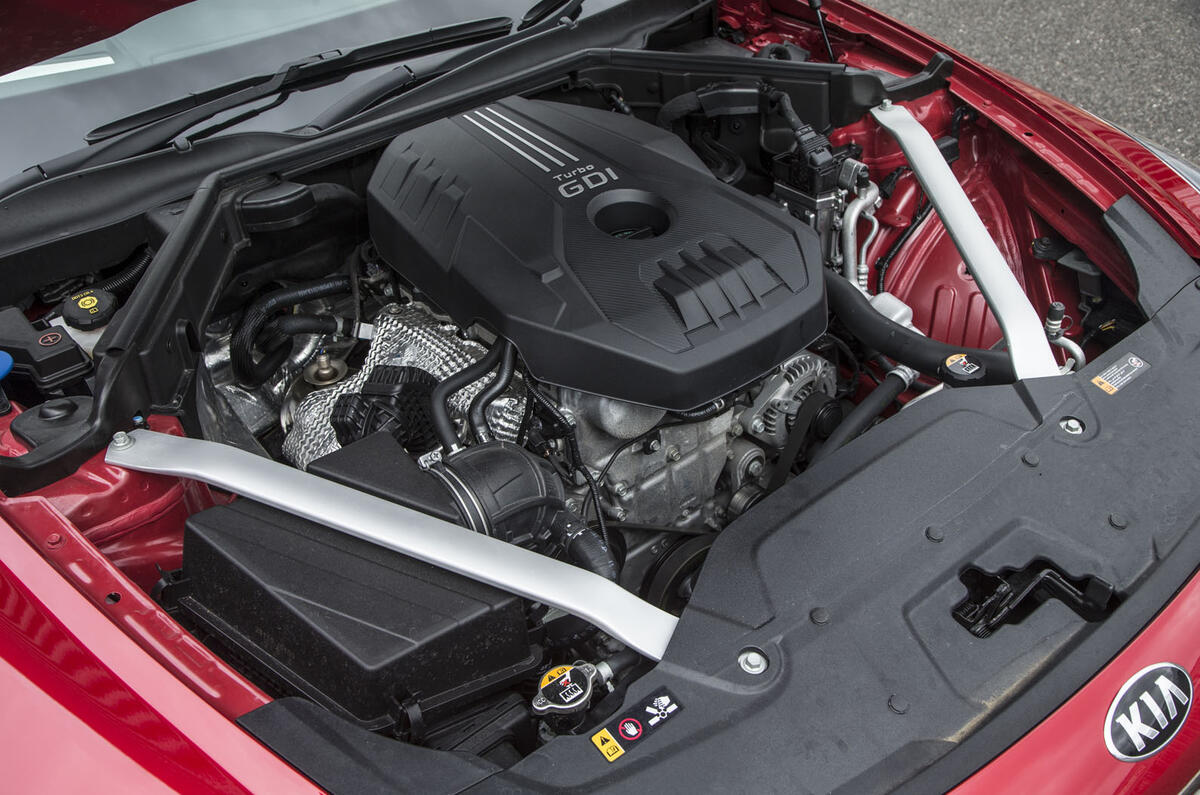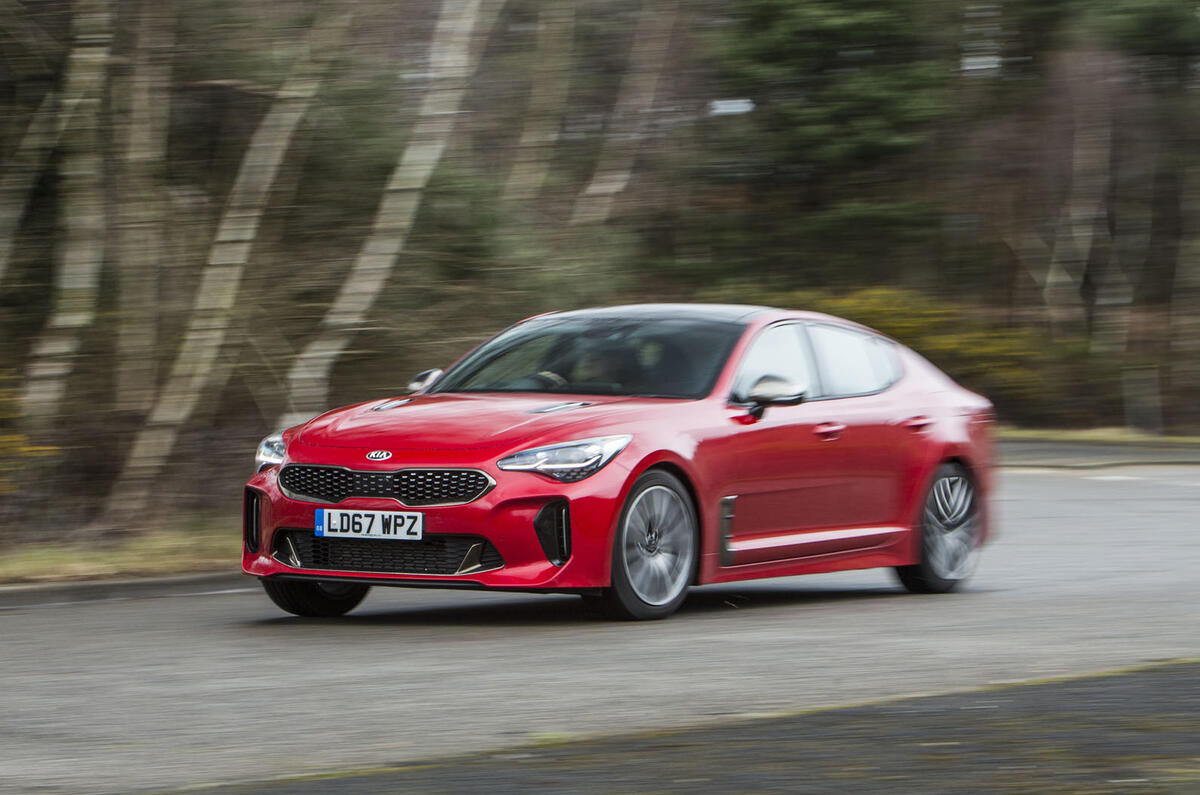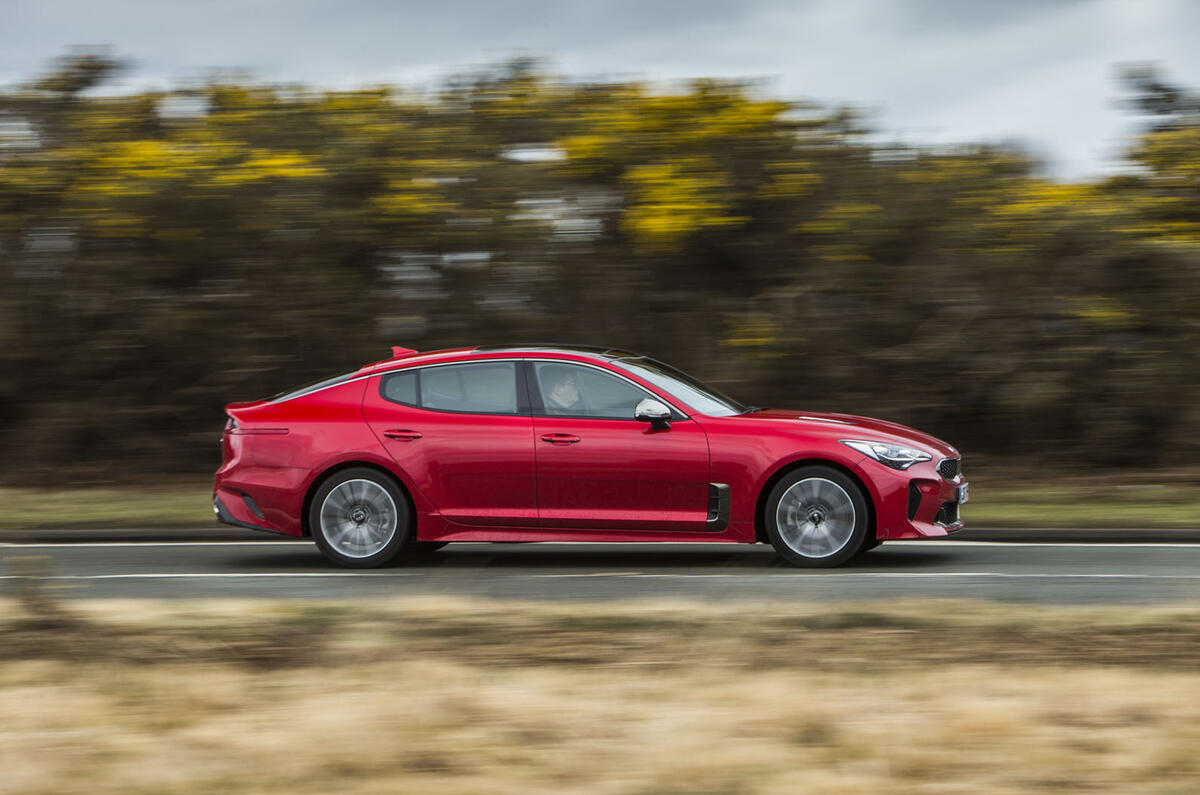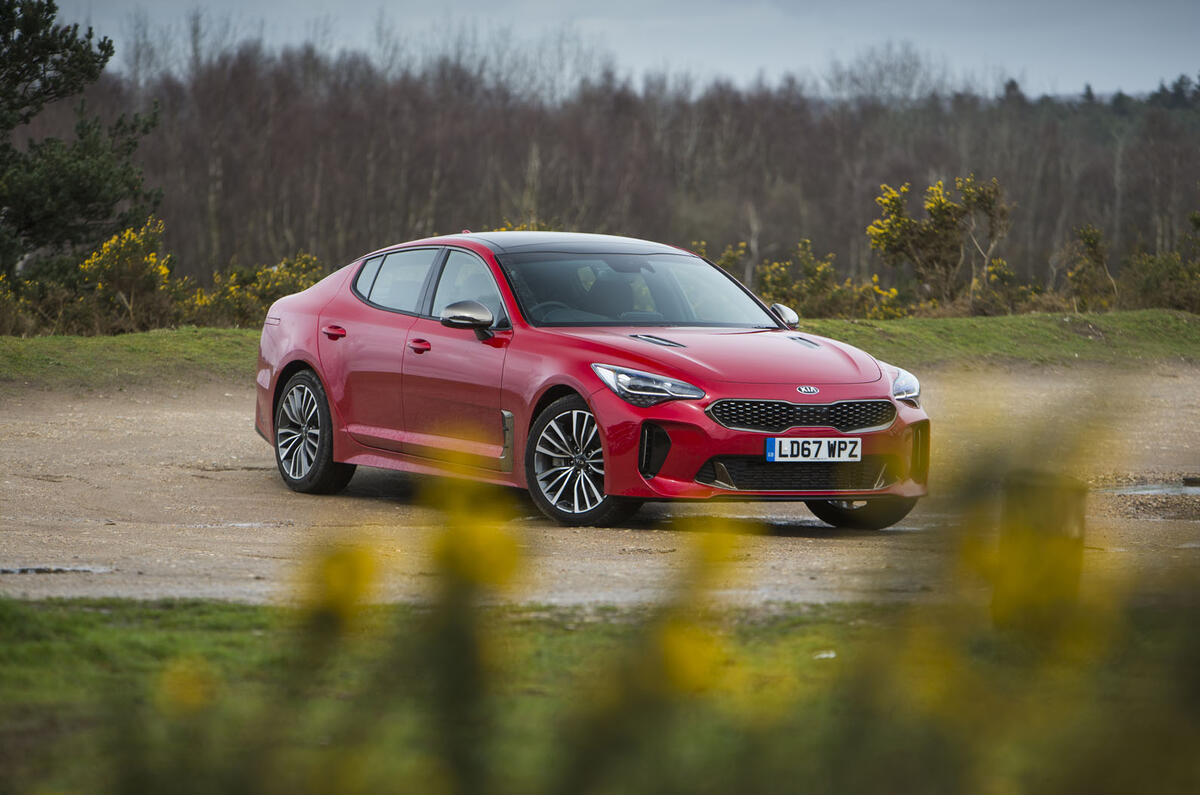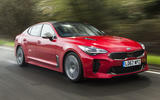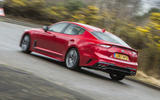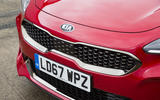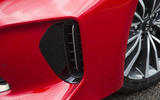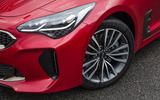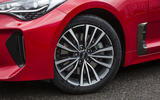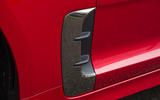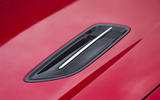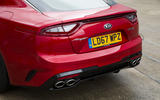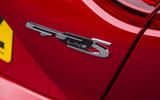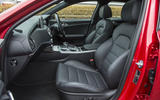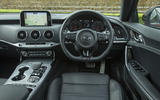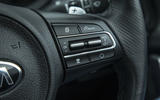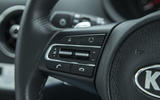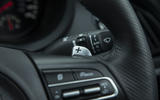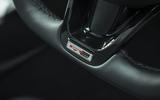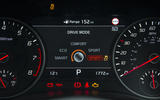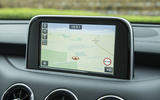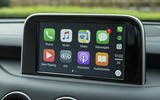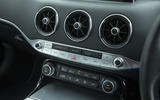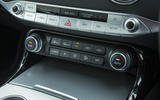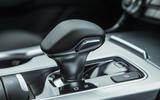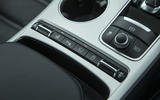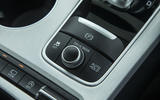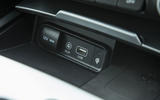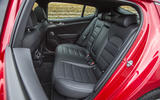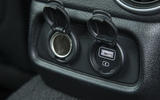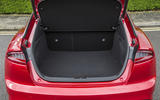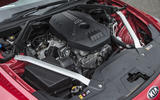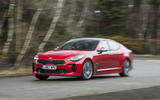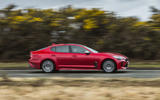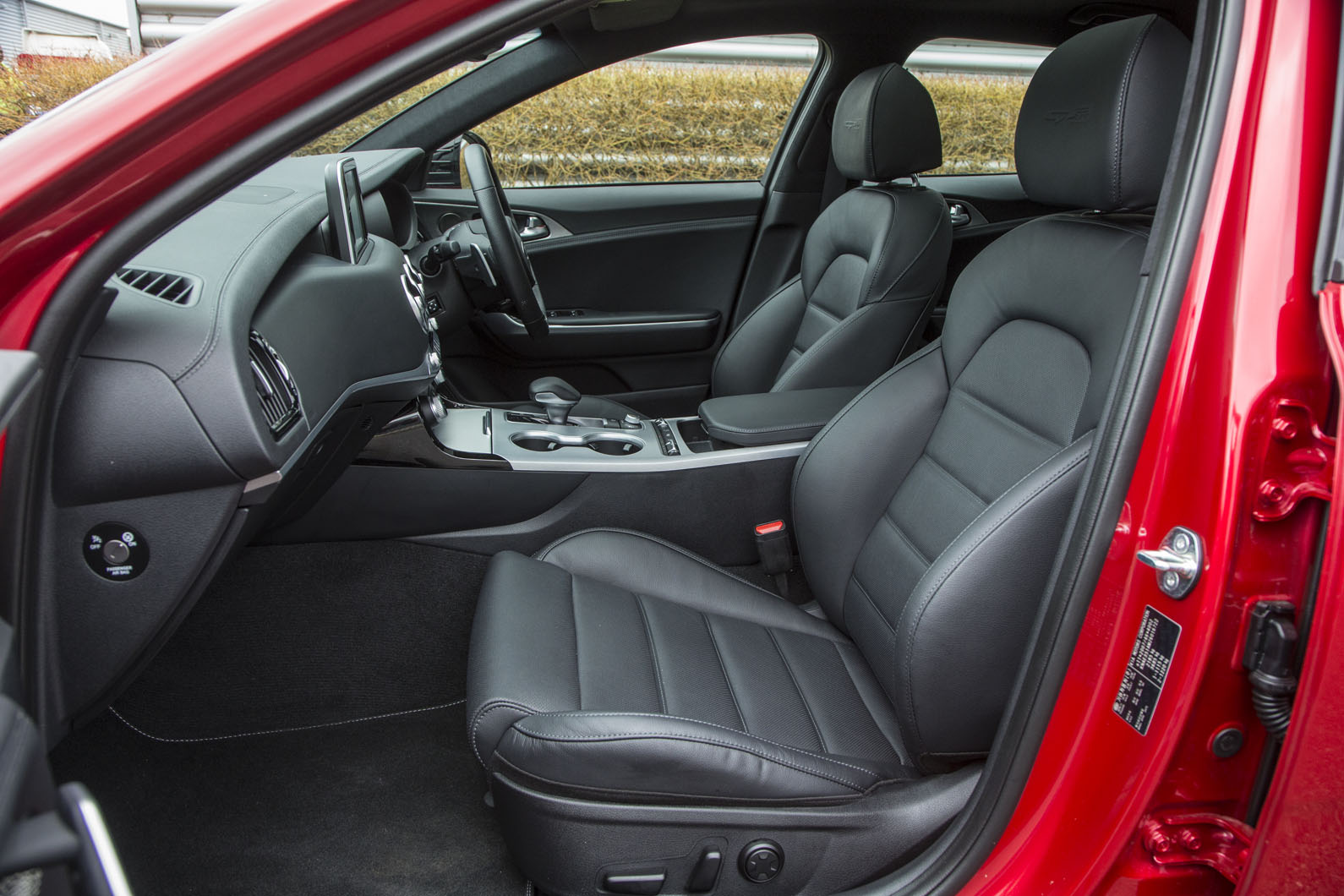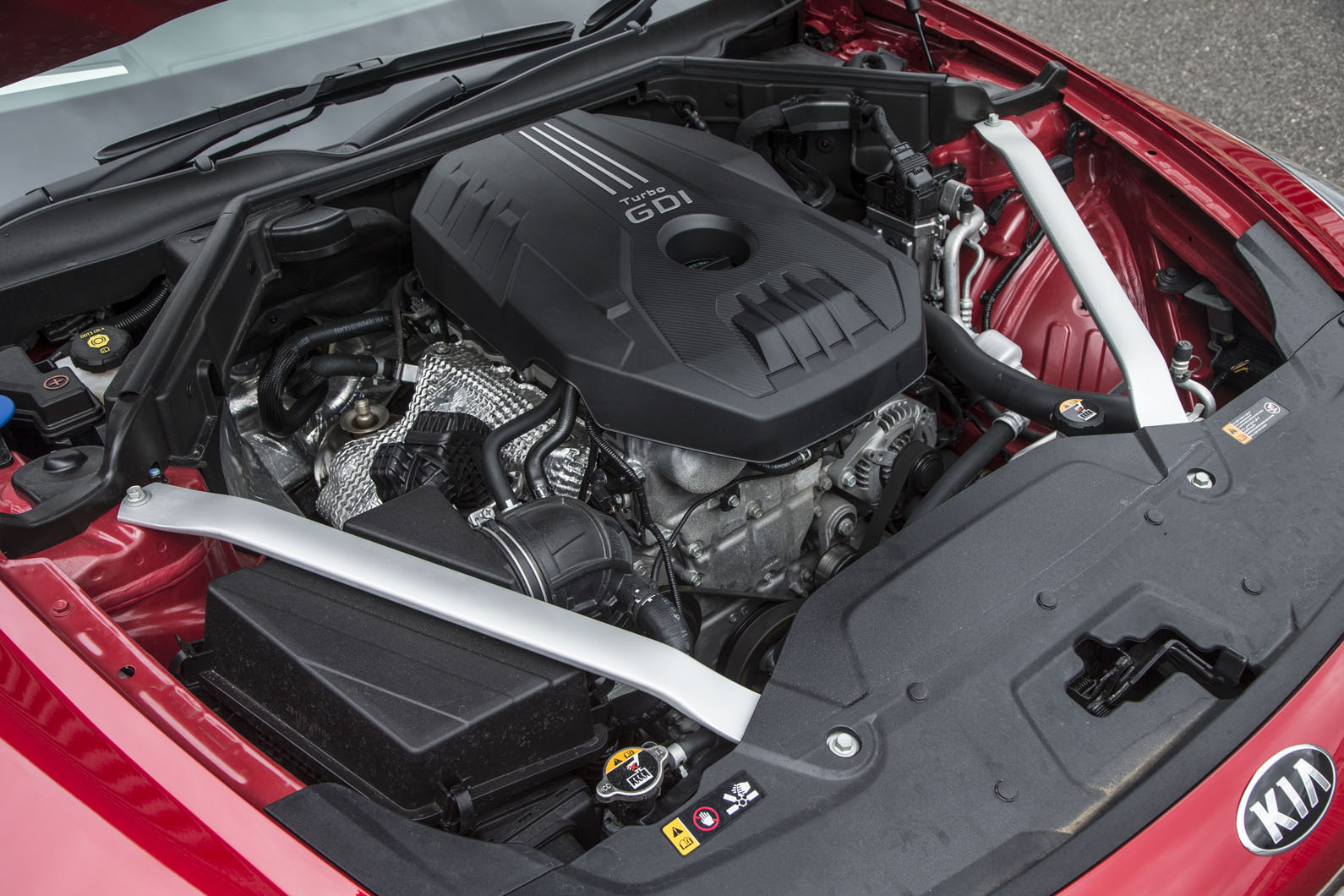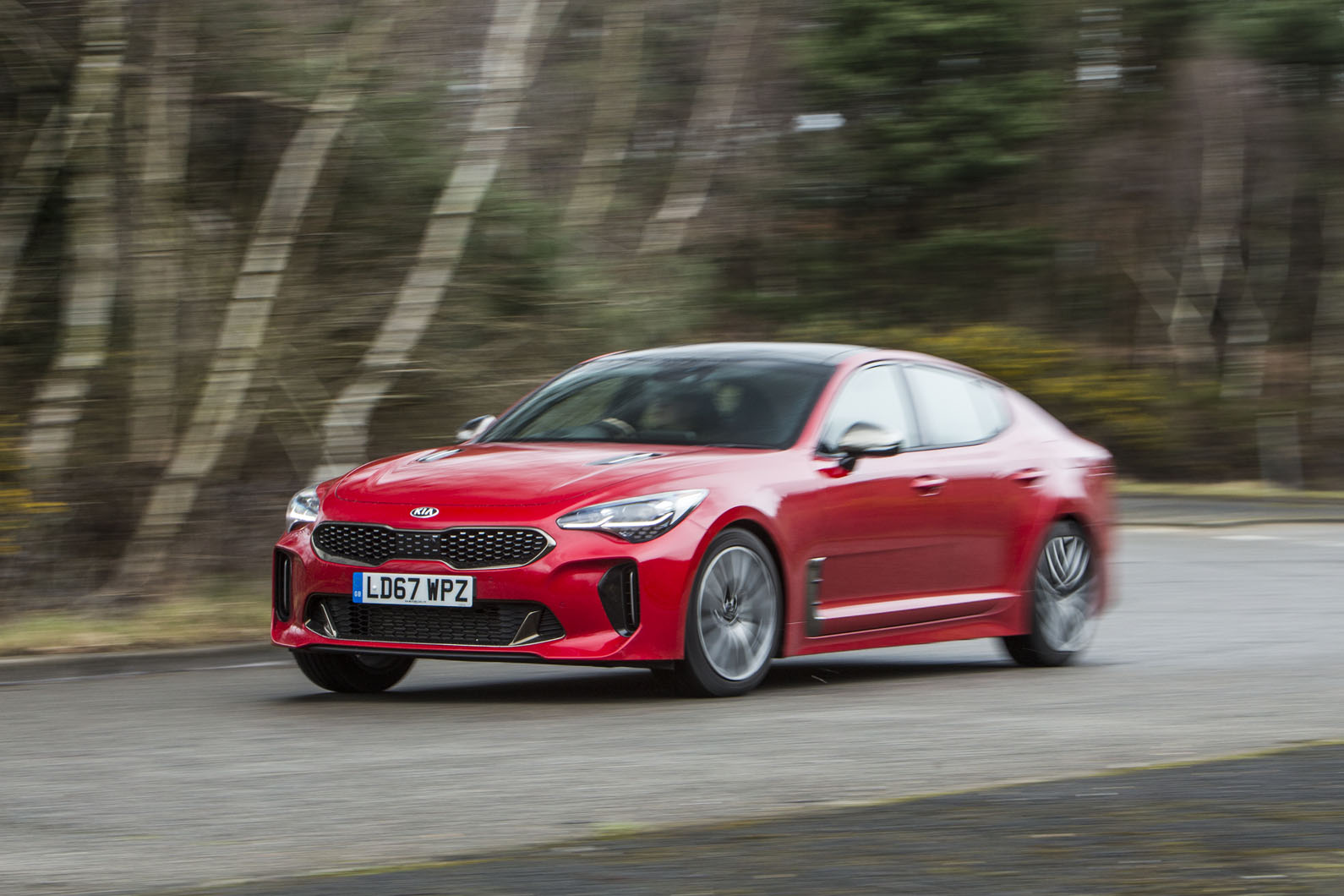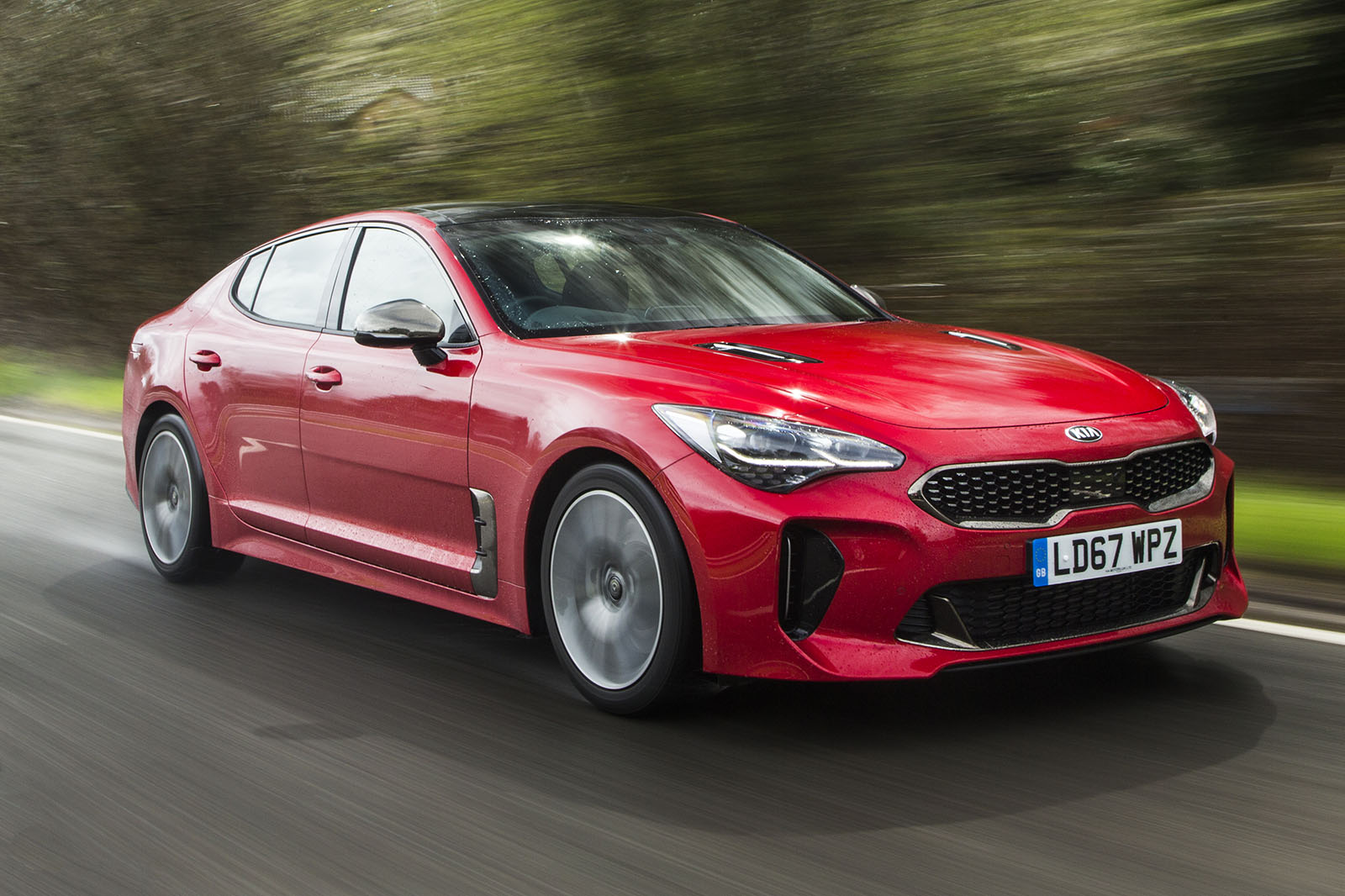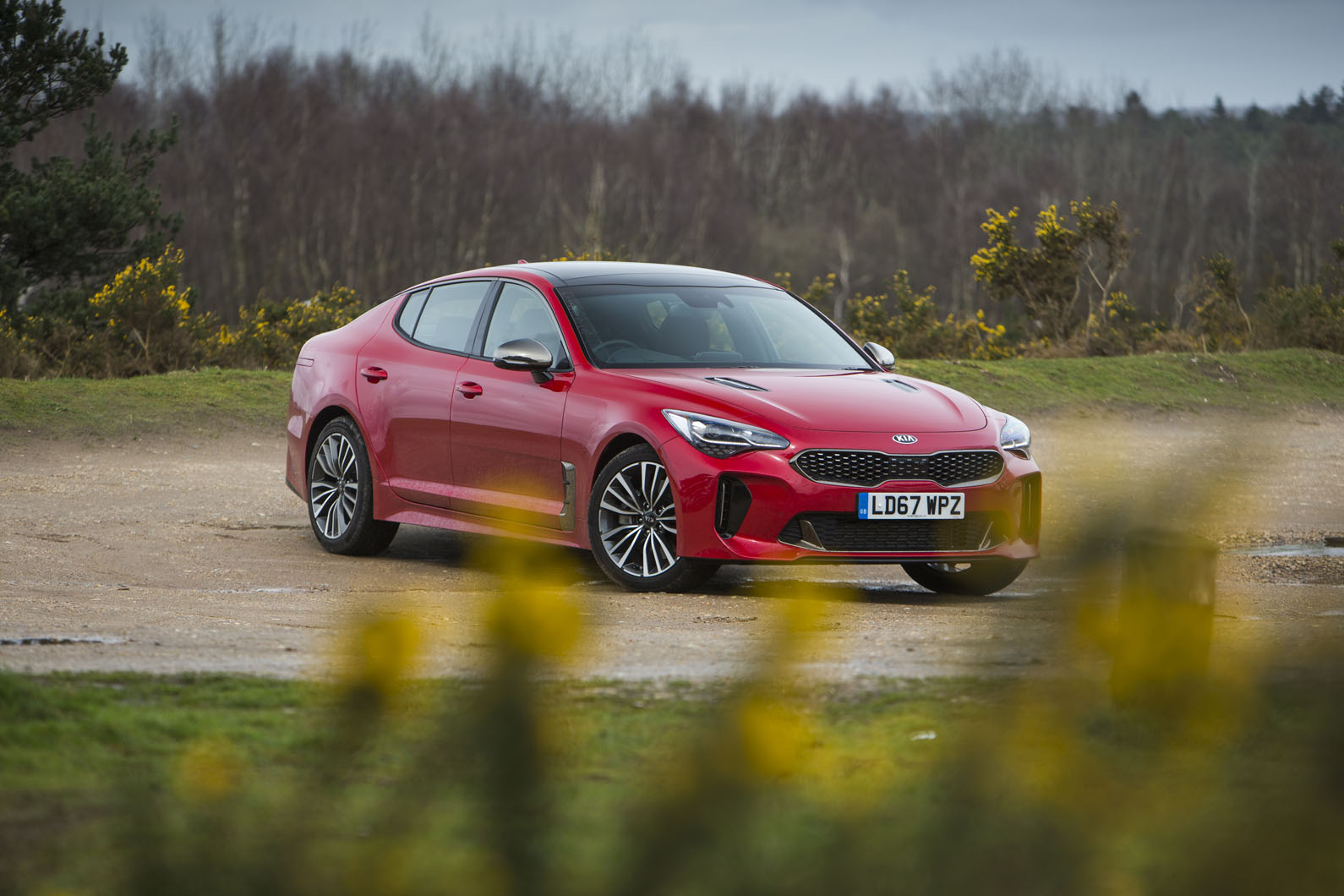Kia has done a commendable job of shirking its value-oriented brand image as far as the Stinger’s exterior is concerned, but that same feat hasn’t quite been achieved inside.
Opening the door certainly reveals a cabin that’s well equipped – there are heated and ventilated leather seats and a full touchscreen infotainment suite, for example – but materially and visually the Stinger doesn’t quite match the levels of perceived quality achieved by the likes of Audi or BMW.
Then again, it doesn’t have to. A BMW or Audi with a similar level of kit as the Stinger GT-Line S will cost you a considerable amount more. That trade-off between relative affordability and material richness might seem like an acceptable compromise to many buyers.
That’s not to say you can’t see where effort has gone into creating a cabin that’s appealing from a design point of view, either. The three circular air vents on the central dashboard fascia, for example, are reminiscent of the arrangement you might find in a Mercedes-Benz C-Class, and the moulded plastic on the fascia itself gives a somewhat convincing impression of leather.
Regardless of specification, all Stingers make use of the same 8.0in touchscreen infotainment system. The dashtop-mounted screen incorporates satellite navigation, DAB radio and Bluetooth connectivity, as well as Apple CarPlay and Android Auto compatibility.
The screen is responsive to the touch, with minimal amounts of lag, although its position on the top of the dash does mean you have to stretch to reach it – not always ideal while on the move.
It’s not particularly graphically advanced, either, especially when compared with systems from Audi and BMW.
Entry-level Stingers make do with a nine-speaker sound system and GT-Line S and GT S models are fitted with a 15-speaker Harman Kardon premium set-up. We can’t comment on how it compares with the standard set-up, but sound quality is rich and balanced, with little in the way of distortion at higher volume levels.
It’s a capable infotainment system but, next to those available on other cars at this price point, it struggles to stand out.
It’s certainly not a home run for Kia, then, but there’s also nothing inherently offensive about the materials it has selected for use in its flagship’s cabin.
It’s a roomy cabin too. Passengers in the rear will find an abundance of leg room – 50mm more than you get in an Audi A5 Sportback – and head room isn’t too bad, either.
The front seats are electrically adjustable, as is the steering rack, which caters to changes in both rake and reach. It all means that getting comfortable is a simple, uncomplicated process.
Boot space is 406 litres and is easily accessible courtesy of that liftback tailgate, which rises to reveal a large, square-shaped aperture. The boot isn’t as large as an Audi A5 Sportback’s or a BMW 4 Series Gran Coupé’s (they both offer 480 litres), but there’s more than enough room in the Kia for weekend luggage for a family of four.


